
IMPACT REPORT
INVESTOR RELATIONS
Capital Markets Department
The World Bank Treasury
1818 H St NW Washington, DC 20433 USA
debtsecurities@worldbank.org
+1 (202) 477-2880
treasury.worldbank.org/capitalmarkets
World Bank Bonds for Sustainable Development: 2019 Impact Report
Cover photos (from left to right): © Marco Antonio Teixeira, Chhor Sokunthea, Curt Carnemark, Arne Hoel/ World Bank May 2020
ACKNOWLEDGEMENTS
The report benefitted from consultation with technical experts in World Bank Global Practices and thematic areas including Geeta Sethi and Simmy Jain in Agriculture; Monique Vledder, Sneha Kanneganti, Maria Gracheva, Meera Shekar, Kyoko Okamura, and Alethea Dopart in Health, Nutrition and Population; Karin Kemper, Xavier Vincent, Delphine Arri, Charlotte de Fontaubert, Sue Pleming and Morgan Graham in Environment, Natural Resources, and Blue Economy; Sameh Wahba, Roland White, Marc Forni, Kristyn Shrader-King, and Yousra Abdelrahman in Urban Development; and Jennifer Sara, Chloe Oliver Viola, and Meriem Gray in Water, and Genevieve Connors, Adeel Abbas Syed, Samuel Fargher, and Janak Shrestha in Climate Change and Caren Grown, Andrea Kucey, Malcolm Ehrenpreis, and Farida Aboulmagd in Gender. The team also received support from and wish to thank the following task team leaders for providing additional insight on projects: Paul Baringanire, Massimiliano Cali, Debabrata Chattopadhyay, Ibrahim Saeed Chowdhury, Simon Davies, John Gabriel Goddard, Surbhi Goyal, Demet Kaya, Ashish Khanna, Martha Lawrence, and Eduardo Olaberria. Finally, we would like to thank the World Bank’s Office of the Managing Director and Chief Financial Officer and Finance Partners for guidance and support in finalizing the report, particularly Samuel Maimbo, Serene Jweied, and Otilia Ciotau.
The report was designed by Jonelle Karinne Agurs.
E T W
Table of Contents
About the World Bank | 5 Foreword | 8 Message from World Bank Treasurer | 9 Introduction | 10 Impact Highlights | 12 Report Summary | 14 Featured Projects | 20 Annex 1: World Bank Sustainable Development Bond Process | 55 Annex 2: Impact Reporting Approach | 56 Annex 3: World Bank Project Cycle | 57 Annex 4: World Bank Exclusion List | 58 Annex 5: List of Abbreviations | 59
ABOUT THE REPORT | 5 INTRODUCTION Foreword | 6 Message from World Bank Treasurer | 7 About the World Bank | 8 World Bank’s Response to COVID-19 | 11 OVERVIEW The World Bank’s Approach: Engaging with Investors on the SDGs | 12 World Bank Bond Timeline FY18 and FY19 | 14 Issuance and Lending Summary for FY19 | 16 Portfolio Commitments and Disbursements | 18 IMPACT HIGHLIGHTS Looking Back: Achieved Impact Highlights | 22 Looking Forward: Projected Impact Highlights | 24 Featured Projects | 26 FRAMEWORK Sustainable Development Bond Process | 30 Determining Project Eligibility | 31 Assessing and Mitigating Environmental and Social Risks | 32 World Bank Exclusion List | 33 PROJECT-BY-PROJECT REPORTING | 35 ANNEX Annex 1: Impact Reporting Approach | 71 Annex 2: World Bank Project Cycle | 72 Annex 3: Accountability Mechanisms | 73 Annex 4: World Bank Sustainability Reporting Resources | 74 LIST OF ABBREVIATIONS | 75 DISCLAIMER | 75
Table of Contents
 Photo credit: © Stephan Gladieu / World Bank
Photo credit: © Stephan Gladieu / World Bank
About the Report
This World Bank Sustainable Development Bond Impact Report is the first impact report covering all World Bank (International Bank for Reconstruction and Development, IBRD) bond issuance and the entire portfolio of IBRD’s development activities.
The report, which covers all IBRD bonds issued during fiscal year (FY) 2019 (July 1, 2018 - June 30, 2019) is intended primarily for World Bank bond investors and other capital market stakeholders to explain how all World Bank bond proceeds support sustainable development and the Sustainable Development Goals (SDGs). The report provides an overview of the World Bank’s issuance as well as detailed information on operational processes and safeguards and alignment with market frameworks. We used the World Bank Green Bond Impact Report1 , which we have been publishing since 2015, as a model for this report. We solicited feedback from investors, underwriters, capital market service providers, thought leaders, in addition to input from our own technical and financial experts and management on an early draft of the impact report. The feedback helped us provide greater clarity on our reporting approach and prompted us to include more forward-looking information. It also provided important recommendations that will help to improve the report as it will continue to evolve overtime.
The INTRODUCTION includes a foreword from our Managing Director and Chief Financial Officer, Anshula Kant, as well as a message fromWorld Bank Treasurer, Jingdong Hua. It also includes an overview of the World Bank Group strategy and goals for context, and information about how the World Bank is supportingmembercountries in their response toCOVID-19.
In the OVERVIEW, we share how the World Bank engages investors on the SDGs while issuing green bonds and sustainable development bonds, highlighting SDGs and themes that investors were most interested in during the reporting period, and providing a timelinewithtransactionexamplesforFY18and FY19. We also provide an issuance and lending summary, starting on page 16, where you will findinformationaboutthevolumeofIBRD
bonds issued in FY19 and new commitments made duringFY19tosupportlendinginmembercountries. Page 18 describes the stock of the entire existing lending portfolio, including funds that IBRD has committed and disbursed for projects active duringFY19,organizedbysectorandregion.
The IMPACT HIGHLIGHTS section looks both back at what was achieved and to the future, using the SDGs as a framework to illustrate results. It presents a set of aggregated actual results for projects completed in FY19 (pp. 19-20) and shows aggregated expected results for the active IBRD portfolio of projects approved starting in FY18 when we introduced IBRD’s expanded use of proceeds language (pp. 22-23) and more systematicallyengagedwithinvestorson the SDGs We also featured several projects, highlighting SDGsthattheysupport.
The FRAMEWORK section includes elements of the World Bank’s operational policies and processes that we thought were most relevant for bond investors for assessing sustainable bonds.
The PROJECT-BY-PROJECT information, organized by sector, shows all projects in the World Bank’s portfolio that were active during FY19, with select expected results and project identification numbers to easily access more detailed project documentationontheWorldBank’sprojectportal.
The ANNEX has additional supporting information that may be of interest to investors, including a list of various World Bank reports that may be helpful resources when assessing sustainability.
The preparation of the report was managed by Colleen Keenan, with key input from Atiyah Curmally, Scott Cantor, and other colleagues from the World Bank Treasury’s capital markets department, support from Zoe Russo for project data collection and analysis, and guidance from Heike Reichelt.
Notes:
/1 http://pubdocs.worldbank.org/en/790081576615720375/IBRD-Green-BondImpact-Report-FY-2019.pdf
4 WORLD BANK BONDS FOR SUSTAINABLE DEVELOPMENT | IMPACT REPORT 2019 5
Foreword
The World Bank plays a fundamental role in convening and supporting middle-income developing countries – through IBRD – to make a difference in the lives and livelihoods of hundreds of millions of people around the world. The strength of the World Bank is demonstrated by the breadth and the depth of our portfolio, which is reflected in this inaugural Sustainable Development Bond impact report for investors.
Together with our country partners, we work to create jobs, develop human capital, promote and protect global public goods, drive environmental sustainability, facilitate access to finance, and build social safety nets. We have helped countries implement complex reform agendas, encouraging initiatives that pave the way for successful and sustainable growth, effective project implementation, and private investment. The World Bank’s lending, technical support, and expertise support countries in making decisions that are critical for lasting growth, which benefits not only their citizens, but the global community. Our IBRD operations, which span 59 countries, are aligned to help countries achieve the World Bank Group’s twin goals of ending extreme poverty and boosting shared prosperity, as well as the Sustainable Development Goals.
ANSHULA KANT Managing Director and World Bank Group Chief Financial Officer
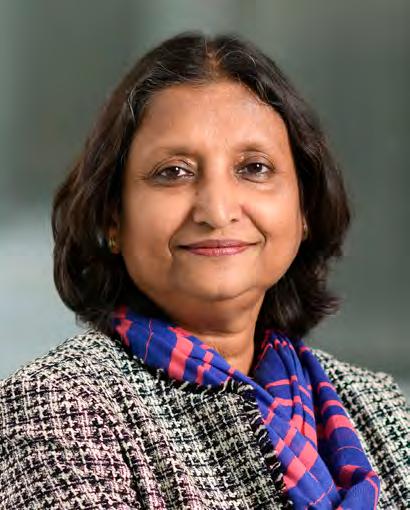
With the COVID-19 pandemic, we are all facing a new and severe global challenge, especially the poorest and most vulnerable people in the countries we serve. The World Bank Group’s response has been swift and robust. We expect to provide up to US$160 billion over 15 months, with about one-third of resources coming from IBRD to support middle-income countries and one-third from IDA in the form of grants and highly concessional loans to support low-income and vulnerable countries. This covers a range of interventions to strengthen primary health care, expand disease monitoring and reporting, train frontline health workers, encourage community engagement to maintain public trust, and improve access to treatment for patients.
The World Bank is also preparing for the macroeconomic impact of the COVID-19 crisis on countries. With the backing of our capital increase, concluded in 2018, we are in a strong position to meet the increased demand from our member governments. We will help countries strengthen social safety nets, support the private sector, and counter financial market disruption.
Bolstered by the capital increase and a robust financial sustainability framework, our issuance of Sustainable Development Bonds, including the recent US$15 billion raised in benchmark bonds across four currencies in April 2020, supports a range of development programs and projects. Programs include the activities that are essential to helping countries withstand the health impacts of the pandemic as well as speed up their economic and social recovery.
I am delighted to share the development impact that the World Bank-financed projects achieved in fiscal year 2019 and provide a sense of what we expect to achieve in the future. These results are not possible without the commitment of a large, diverse, and global set of investors supporting sustainable development. I thank our investors for their trust in our institution and our global development mission, and I thank the World Bank Treasury and operational teams for their commitment to strengthening development outcomes around the world. This strong partnership is more essential today than ever before. And I am confident that together we can build a resilient and sustainable future.
6 WORLD BANK BONDS FOR SUSTAINABLE DEVELOPMENT | IMPACT REPORT 2019
A Message from the Treasurer
ne of the core roles of the World Bank Treasury is to raise funds from the capital markets to support the financing that the World Bank provides to its member governments. This enables them to implement sustainable development projects and programs that address some of the most challenging development issues, including in crisis times like these as we face the COVID-19 pandemic. We also work to promote and grow capital markets that support regular, sustainable finance flows to where they are needed most.
As a pioneering issuer of green and sustainable bonds, we have led transformative change in capital markets –by issuing the first labeled green bond, as a founding member and architect of the Green Bond Principles, in our role as an executive committee member of the Green Bond and Social Bond Principles, and through our partnerships with asset owners like the Government Pension Investment Fund of Japan. These efforts are helping to expand sustainable investment infrastructure and build awareness about approaches that incorporate ESG factors into fixed-income investment.

World Bank bonds offer investors the opportunity to earn a financial return while contributing to the betterment of society. Our Sustainable Development Bonds also help investors manage ESG risks and achieve development impact goals. With our bonds, we are communicating the environmental and social impacts of all the products, in various sectors, through which we lend to member governments. We want investors to understand the value and benefit of what the entire balance sheet finances—how it contributes to development and the SDGs, not only select environmental aspects such as our green bond portfolio.
Bank Vice President & Treasurer
In June 2019, we celebrated the display of over 200 IBRD green and sustainability bonds on the Luxembourg Green and Sustainable Exchange. This event marked a major milestone in our efforts to communicate the ESG credentials of IBRD’s issuance program. It also signaled our commitment to apply the same disclosure and standards that we use for green bonds to all the bonds IBRD issues.
We are pleased to present this first impact report on the entire portfolio of IBRD bonds. We remain committed to improving the quality and depth of our reporting and to paving new pathways for issuers and investors to join together and build the financial markets we need to tackle global development challenges and achieve the SDGs by 2030. We can collectively contribute to improving living conditions, protecting the planet, creating better jobs, improving health care and education, and reducing inequality around the world for future generations. A sustainable future requires us to focus on every aspect of our society.
About the World Bank | 5 Message from World Bank Treasurer | 9 Introduction | 10 Impact Highlights | 12 Report Summary | 14 Featured Projects | 20 Annex 1: World Bank Sustainable Development Bond Process | 55 Annex 2: Impact Reporting Approach | 56 Annex 3: World Bank Project Cycle | 57 Annex 4: World Bank Exclusion List | 58 Annex 5: List of Abbreviations | 59 Table of Contents
O
JINGDONG HUA
4 WORLD BANK BONDS FOR SUSTAINABLE DEVELOPMENT | IMPACT REPORT 2019 7
World
ABOUT THE WORLD BANK: Mission & Strategy
The International Bank for Reconstruction and Development was established in 1944 and is the original member of the World Bank Group. IBRD is an international organization and global development institution owned by 189 member countries. As the largest development bank in the world, it supports the mission of the World Bank Group (WBG)2 by providing loans, guarantees, risk management products, and advisory services to middle-income and creditworthy low-income countries. Today, IBRD and the International Development Association (IDA), which was established in 1960 and lends to low-income countries, are known collectively as the World Bank and share the same leadership and staff. Both IBRD and IDA issue bonds in the international capital markets to support the development mission. This report focuses on IBRD bond issuance.
At the heart of the World Bank Group’s strategy are two goals endorsed by its Board of Governors in 2013:
• END EXTREME POVERTY: reduce the percentage of people living on less than US$1.90 a day to three percent by 2030.
• PROMOTE SHARED PROSPERITY: foster income growth for the bottom 40 percent of the population in every developing country.
To deliver on the twin goals as well as support the Sustainable Development Goals, the WBG’s management and shareholders have agreed on three main priorities for our work with developing countries, including those affected by fragility, conflict, and violence: accelerate sustainable and inclusive growth, invest in human capital, and strengthen resilience.
This overarching strategic framework rests on four pillars: (1) serving all clients in low- and middle-income countries; (2) creating markets, mobilizing finance for development, and expanding the use of private sector solutions; (3) leading on global issues; and (4) improving the ways we do business to be agile, efficient, and closer to clients.
The WBG is committed to bringing together the international community in the urgent task of achieving the goals by 2030. They can be reached only through the collaboration of all partners, including countries, other institutions, civil society, and the private sector.
Notes:
/2
For
the purpose of this report, “World
Bank” or the
“Bank”
refers to IBRD. The World Bank Group consists of five organizations: International Bank for Reconstruction and Development, International Development Association, International Finance Corporation, Multilateral Investment Guarantee Agency and International Centre for Settlement of Investment Disputes.
8 WORLD BANK BONDS FOR SUSTAINABLE DEVELOPMENT | IMPACT REPORT 2019
 Photo credit: © Heather Elliott / World Bank
Photo credit: © Heather Elliott / World Bank
 Photo credit: © Henitsoa Rafalia / World Bank
Photo credit: © Henitsoa Rafalia / World Bank
A CRISIS:
The World Bank’s Response to COVID-19
COVID-19 has become a global pandemic affecting virtually all countries. The extraordinary public health measures taken by governments around the world – from social distancing to partial and complete lockdowns – are resulting in a significant contraction of the world economy. Governments are taking far-reaching health, social, and economic measures. Their actions are being matched by actions of the multilateral institutions. The World Bank Group (WBG) is implementing a strong response to support its members with an initial focus on emergency health support. In an immediate second phase the WBG is supporting countries to cope with the economic and social crisis.
The WBG, across its financing institutions, IBRD, IDA, IFC, and MIGA, is prepared to deploy up to US$160 billion over the next 15 months to support COVID-19 measures that will help countries respond to immediate health consequences of the pandemic and bolster economic recovery. The broader economic program will aim to shorten the time to recovery, create conditions for growth, support small and medium enterprises, and help protect the poor and vulnerable. There will be a strong poverty focus in these operations, with an emphasis on policy-based financing, and protecting the poorest households and the environment.
The first US$12 billion WBG package of fast-track financing to assist countries and companies in their efforts to prevent, detect and respond to COVID-19 was approved initially on March 3 and was increased to US$14 billion on March 17, 2020. The IBRD share of this new financing was US$2.7 billion to strengthen national systems for public health preparedness, including for disease containment, diagnosis, and treatment. The first set of these emergency support operations was approved by the World Bank Board of Directors on April 2, 2020. In parallel, the World Bank is redeploying resources in existing projects, including through restructuring, use of emergency components of existing projects and triggering contingent financing.
As of early May 2020, the World Bank has financed, and staff are implementing, COVID-19 programs in nearly 100 countries. These programs build on decades of work and the existing portfolio of programs to support developing countries strengthen health systems. This enables the World Bank to act with speed and precision at this critical time. Among the initial IBRD projects include the following:
ARGENTINA
US$35 million to support the country to identify, isolate, and provide care to patients and prepare and strengthen its health system.
DOMINICAN REPUBLIC
US$150 million to implement emergency measures to contain the spread and manage the impact of the pandemic by tapping contingency financing that was put in place in 2017 to respond to natural disasters and health emergencies.
ECUADOR
US$20 million to support the national plan with a project that focuses on prevention and providing adequate medical care and strengthening the national public health system.
INDIA
US$1 billion to purchase testing kits, personal protective equipment, ventilators, and medicines, set up new isolation wards, increase infection prevention and control measures.
LEBANON
US$40 million to restructure existing 2017 health program to finance procurement of medical goods and equipment and train health workers and frontline responders. Learn
SUPPORTING MEMBERS
THROUGH
4 WORLD BANK BONDS FOR SUSTAINABLE DEVELOPMENT | IMPACT REPORT 2019 11
more: worldbank.org/COVID19
Engaging with Investors on the SDGs
The World Bank (IBRD) issues bonds with two types of labels: World Bank Green Bonds and World Bank Sustainable Development Bonds.
All World Bank development operations are designed to achieve positive environmental and social impacts and outcomes consistent with the World Bank Group’s twin goals of ending extreme poverty and advancing shared prosperity. Operations are approved by the World Bank Board of Executive Directors after an extensive internal review process, which integrates sustainability policies and environmental and social requirements. We take a portfolio approach to issuing sustainable bonds, which means we support a variety of sustainable development sectors and the range of SDGs and do not earmark bond proceeds for individual sectors or projects.
Over FY18-19, we used our issuance program to engage investors on the Bank’s development mandate, explain how the use of bond proceeds supports the financing of development activities, and to describe how these activities contribute to the SDGs. For the World Bank this has been an opportunity to draw attention to the institution’s work to respond to key development challenges while supporting the financing of a broad range of development sectors in line with our mission. For investors, it has been an opportunity to align their investments to the SDGs, implement ESG strategies, and communicate sustainable investment priorities to their stakeholders. The timeline on the following pages illustrates key transactions that were part of our awareness raising activities.
HEALTH AND NUTRITION OF WOMEN AND CHILDREN

Ensuring that every woman and child has access to health care is pivotal for strengthening human capital, building robust economies, and ending poverty. Multi-stakeholder partnerships such as the Global Financing Facility (GFF) work alongside the World Bank to accelerate improved health outcomes. Pairing GFF funding with World Bank lending helps to buy down the cost of financing for eligible projects, so that governments can expand their investments in human capital. The GFF is currently providing US$46 million together with IBRD financing for projects in Indonesia, Guatemala, and Vietnam in support of country-led efforts to improve the health and nutrition of women, children, and adolescents. The IBRD health and nutrition portfolio currently includes 29 projects with total commitment of US$6.5 billion.
GENDER EQUALITY
The World Bank takes as its starting point that no country, community, or economy can achieve its potential or meet the challenges of the twenty-first century without the full and equal participation of women and men, girls and boys. World Bank diagnostic assessments, country strategies, and project design consider gender gaps and solutions in four key areas for the greatest impact: (1) reducing gaps in health, education, and social protection; (2) removing constraints for more and better jobs; (3) removing barriers to women’s ownership and control of assets; and (4) enhancing women’s voice and agency and engaging men and boys.
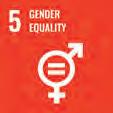
WATER
The World Bank is the world’s largest multilateral source of financing for water in developing countries with US$37.4 billion in water-related investments. In 2019, the World Bank published its first Strategic Action Plan for Water aligning the Bank’s investments across three pillars: Sustain Water Resources; Deliver Services (including water supply, sanitation, and irrigation services); and Build Resilience. The Global Water Security & Sanitation Partnership, launched in 2017 and housed at the World Bank, complements the Bank’s efforts and supports countries in meeting SDG targets, particularly those of Goal 6: “ensure availability and sustainable management of water and sanitation for all”. IBRD’s Water portfolio is currently comprised of 69 projects with total commitments of around US$14.9 billion.
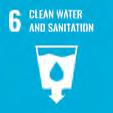
THE
WORLD BANK’S APPROACH:
12 WORLD BANK BONDS FOR SUSTAINABLE DEVELOPMENT | IMPACT REPORT 2019
OCEANS, FISHERIES & COASTAL ECONOMIES
The World Bank’s Blue Economy program supports economic growth, social inclusion, and livelihoods while also supporting the sustainable and integrated development of marine and coastal resources in healthy oceans. Projects range from large regional fisheries programs in Africa and the Pacific, to reducing water and marine pollution from all sources including by improving sanitation, and supporting sustainable coastal development, with a focus on climate change impacts such as erosion. This includes PROBLUE, a multi-donor trust fund that supports the sustainable and integrated development of economic sectors in healthy oceans. Activities are focused on: improving the management of fisheries and aquaculture; addressing marine pollution, including litter and plastics; sustainably developing key sectors such as tourism, maritime transport, and off-shore renewable energy; and building government capacity to manage marine and coastal resources. The World Bank’s oceans program currently includes US$5.6 billion in active IBRD and IDA projects.
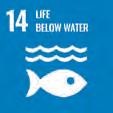
SUSTAINABLE CITIES

The World Bank Group is working with the private sector, governments, and civil society to manage fragility risks by engaging early to build clean and efficient cities and communities that are more resilient to climate change and natural disasters. This includes confronting barriers that prevent marginalized groups from fully participating in political, economic, and social life. The Bank has invested on average about US$6 billion annually in urban development and resilience projects (FY17–19), excluding investments in sustainable urban transport and water. IBRD’s annual disaster risk management investment, of which urban investments are a central pillar, has increased steadily over the past seven years – from US$1.9 billion in FY12 to US$2.3 billioninFY19.Our CityResilienceProgram workswithcitiestostrengthenresilienceandaccess a range of financing options. Since June 2017, it has worked with 57 cities in 39 countries for a combined US$2.3 billion (of which, US$975 million is for IBRD countries).
FOOD LOSS & WASTE
The environmental impacts of food that is produced, but ultimately lost or wasted, are massive –accounting for 8% of global annual GHG emissions. The World Bank is working to understand the economic drivers and the impacts of policy and financial levers and developing food smart diagnostics to inform country-specific action and financing needs. World Bank projects are working to improve post-harvest technologies for food storage, handling and processing, develop cold chain infrastructure and biogas energy facilities, and create cooperatives and access to markets. IBRD’s Food Loss and Waste portfolio is currently comprised of 25 projects across regions with total commitments of around US$4.6 billion.

CLIMATE RESILIENCE
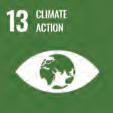
The WBG Climate Change Action Plan (2016-2020) lays out ambitious targets to be met by 2020, including increasing the climate-related share of the WBG’s lending to 28% - reached in 2018, helping client countries add 30 gigawatts of renewable energy, put in place early warning systems for 100 million people, and develop climate-smart agriculture investment plans for at least 40 countries, among other priorities. Every World Bank project is screened for climate cobenefitsandtheWorldBankreportsannuallyontheGHGemissionsreductionsachievedacross its lending operations³. In FY19, IBRD projects had projected net GHG emissions reductions of 71.5 million tCO2eq/year.
Notes:
/3 GHG
is undertaken by
Net
4 WORLD BANK BONDS FOR SUSTAINABLE DEVELOPMENT | IMPACT REPORT 2019 13
accounting
IBRD investment projects where World Bank approved GHG accounting methodologies are available. World Bank GHG emissions data is subject to change according to the portfolio and lending-instrument mix reported. IBRD emissions data represents a subset of the net emissions data reported for the World Bank (IDA and IBRD) under the Bank’s corporate scorecard. The World Bank has committed to report GHG emissions for the World Bank portfolio (i.e., IDA and IBRD combined) and the disaggregation of the two may not always be available.
proceeds of a specific World Bank bond are not committed or earmarked for lending to, or financing of, any particular projects or programs, and returns on a specific World Bank bond are not linked to the performance of any particular project or program.
World Bank Bond Timeline
FY18 & FY19
As an innovator and leading issuer in capital markets for over seventy years the World Bank plays an important role pioneering financial tools that deepen and expand markets and provide the financing needed to tackle the world’s most difficult development challenges.
JULYAUGUSTSEPTEMBEROCTOBERNOVEMBERDECEMBER
World Bank CAD 1 billion benchmark bond highlights the benefits of investing in women and young people
World Bank issues a SEK 1 billion 7-year bond, the first in a series of Sustainable Development Bonds issued to raise awareness for the critical role that water and ocean resources play in development around the world
The World Bank issues US dollardenominated sustainable development notes that provide investors return exposure to the ESG performance of UN Global Compact signatories through the Global Sustainability Signatories Index 7.5% VC ER working with UBS
World Bank joins forces with Skandia, SEB Life & Investment Management, Handelsbanken Fonder, and Church of Sweden to raise awareness for Sustainable Development Goal 11: Sustainable Cities and Communities





World Bank marks the 10-year anniversary of the green bond market with a landmark USD 1.3 billion issuance bringing its green bond program to USD 13 billion

2018
14 WORLD BANK BONDS FOR SUSTAINABLE DEVELOPMENT | IMPACT REPORT 2019
The World Bank issued the first labeled green bond for mainstream institutional investors.
Net proceeds of a specific World Bank bond are not committed or earmarked for lending to, or financing of, any particular projects or programs, and returns on a specific World Bank bond are not linked to the performance of any particular project or program.
Sustainable Development
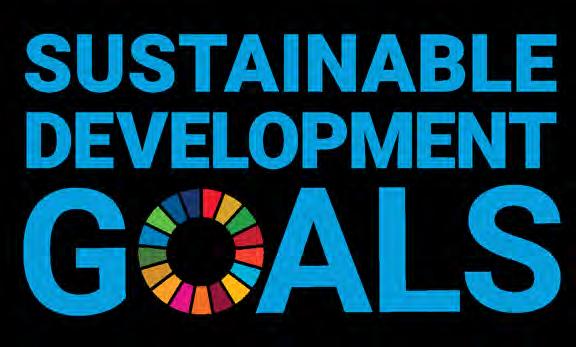


Bonds linked to the Solactive Human Capital World MV Index which selects companies for fair work practices and contribution to societal development
World Bank issues a CAD 1.5 billion Sustainable Development bond, the largest bond issued by an SSA (sovereign, supranational agency) in the Canadian market, to raise awareness for the longlasting benefits of investing in the health and nutrition of women, children, and adolescents

World Bank launches the first Sustainable Development Bond to raise awareness for food loss and waste, focusing on the challenges outlined by Sustainable Development Goal 12.3. The Folksam Group was the sole investor in the three-year, USD 300 million bond

World Bank lists its first bond on Euronext Dublin, a 10-year global sustainable development bond, raising EUR 1.5 billion from dedicated sustainability investors.

Luxembourg Stock Exchange began displaying all World Bank bonds on the Luxembourg Green Exchange or LGX, the exchange’s platform dedicated to green, social and sustainable financial instruments. The event was marked with a ceremony at the Sustainable Finance Forum in Luxembourg.

JULYAUGUSTSEPTEMBEROCTOBERNOVEMBERDECEMBER JANUARYMARCH MAY JUNE 2019
4 WORLD BANK BONDS FOR SUSTAINABLE DEVELOPMENT | IMPACT REPORT 2019 15
Issuance and Lending Summary for FY19
In fiscal year 2019 (FY19: July 1 - June 30), the World Bank (IBRD) issued US$54 billion in bonds in 27 different currencies through 440 transactions to support the financing of sustainable development projects and programs. This includes US$2.7 billion in green bonds.7
Annual Issuance10 20 30 40 50 60 70 FY09 FY10FY11FY12FY13FY14FY15FY16FY17FY18FY19 US$ billion AnnualIssuance Benchmark/Global Bonds Other Plain Vanilla Bonds Structured/Risk Transfer Notes USD 64% GBP 11% EUR 9% AUD 4% CAD 3% SEK 2% Other 7% FY19 Breakdown by Currency FY19 Breakdown by Currency Report Summary
ISSUANCE HIGHLIGHTS:
Notes: /7 For more information, please see the 2019 World Bank Green Bond Impact Report: http://pubdocs.worldbank.org/en/790081576615720375/IBRD-Green-Bond-ImpactReport-FY-2019.pdf 12 WORLD BANK BONDS FOR SUSTAINABLE DEVELOPMENT | IMPACT REPORT 2019 Notes: /4 For more information, please see the 2019 World Bank Green Bond Impact Report: http://pubdocs.worldbank.org/en/790081576615720375/IBRD-Green-Bond-ImpactReport-FY-2019.pdf. 4
16 WORLD BANK BONDS FOR SUSTAINABLE DEVELOPMENT | IMPACT REPORT 2019
COMMITMENTS:
NEW COMMITMENTS:
In FY19, IBRD committed US$23.2 billion through 100 new projects to fund sustainable development activities in middle-income countries.
23 billion
4 WORLD BANK BONDS FOR SUSTAINABLE DEVELOPMENT | IMPACT REPORT 2019 13
climate co-benefits *As a percentage of total new projects committed Africa 4% East Asia & Pacific 17% Europe & Central Asia 16% Latin America & Caribbean 25% Middle East & North Africa 21% South Asia 17% FY19 Loan commitments by region FY19 Loan Commitments by Region
54% 57% 31% for lower middleincome countries have a gender focus* have
IBRD LENDING COMMITMENTS SUPPORT CRITICAL AREAS
4 WORLD BANK BONDS FOR SUSTAINABLE DEVELOPMENT | IMPACT REPORT 2019 17
Commitments & Disbursements
Portfolio Commitments & Disbursements
By Sector:
Notes: Amounts may not add up due to rounding.
/a The committed amount is the World Bank loan net of cancellations reported in equivalent US $ billions Loans denominated in other currencies are converted to US$ equivalents using the spot exchange rate on the report date (June 30, 2019).
/b The allocated amount is the amount of World Bank bond proceeds allocated to support the financing of disbursements to the project reported in equivalent US$ billions. Loans denominated in other currencies are converted to US$ equivalents using the spot exchange rate on the report date (June 30, 2019)
10% Public Administration
8% Industry, Trade & Services
4% Health
5% Financial Sector
19% Energy & Extractives
6% Social Protection
22%
Transportation
5% Education
14% Water & Sanitation
7% Agriculture, Fishing & Forestry
14 WORLD BANK BONDS FOR SUSTAINABLE DEVELOPMENT | IMPACT REPORT 2019
Committed/a Allocated & Outstanding/b US$eq. billion Agriculture, Fishing & Forestry 7.7 2.9 Education 5.7 2.5 Energy & Extractives21.6 11.6 Financial Sector5.5 4.3 Health 5.1 1.9 Industry Trade & Services 9.5 4.8 Information & Communications 0.2 0.1 Public Administration11.8 8.2 Social Protection6.4 4.5 Transportation26.1 13.1 Water, Sanitation & Waste Management16.3 7.2 Total115.9 61.3
18 WORLD BANK BONDS FOR SUSTAINABLE DEVELOPMENT | IMPACT REPORT 2019
By Region:
Notes:
Amounts may not add up due to rounding.
/a The committed amount is the World Bank loan net of cancellations reported in equivalent US$ billions. Loans denominated in other currencies are converted to US$ equivalents using the spot exchange rate on the report date (June 30, 2019)
/b The allocated amount is the amount of World Bank bond proceeds allocated to support the financing of disbursements to the project reported in equivalent US$ billions. Loans denominated in other currencies are converted to US$ equivalents using the spot exchange rate on the report date (June 30, 2019).
4 WORLD BANK BONDS FOR SUSTAINABLE DEVELOPMENT | IMPACT REPORT 2019 15 Committed/a Allocated & Outstanding/b US$eq. billion Africa (AFR) 7.4 3.7 East Asia & Pacific (EAP)23.8 12.6 Europe & Central Asia (ECA)20.8 10.7 Latin America & Caribbean (LAC)25.3 15.2 Middle East & North & Africa (MNA)18.3 10.8 South Asia (SAR)20.3 8.3 Total115.9 61.3 ECA 18% EAP 21% LAC 22% SAR 17% MNA 16% AFR 6%
4 WORLD BANK BONDS FOR SUSTAINABLE DEVELOPMENT | IMPACT REPORT 2019 19
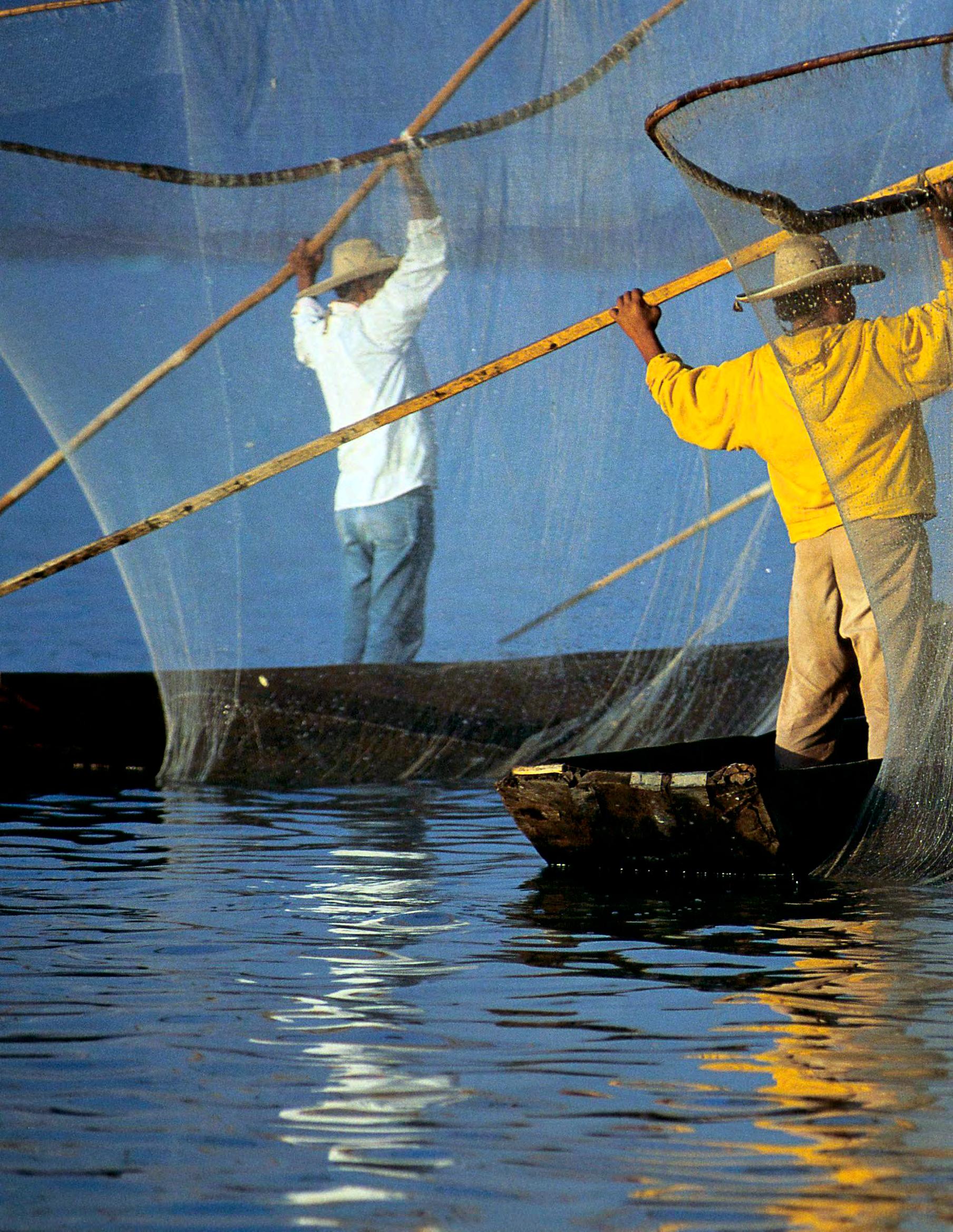 Photo credit: © Curt Carnemark / World Bank
Photo credit: © Curt Carnemark / World Bank
Impact Highlights
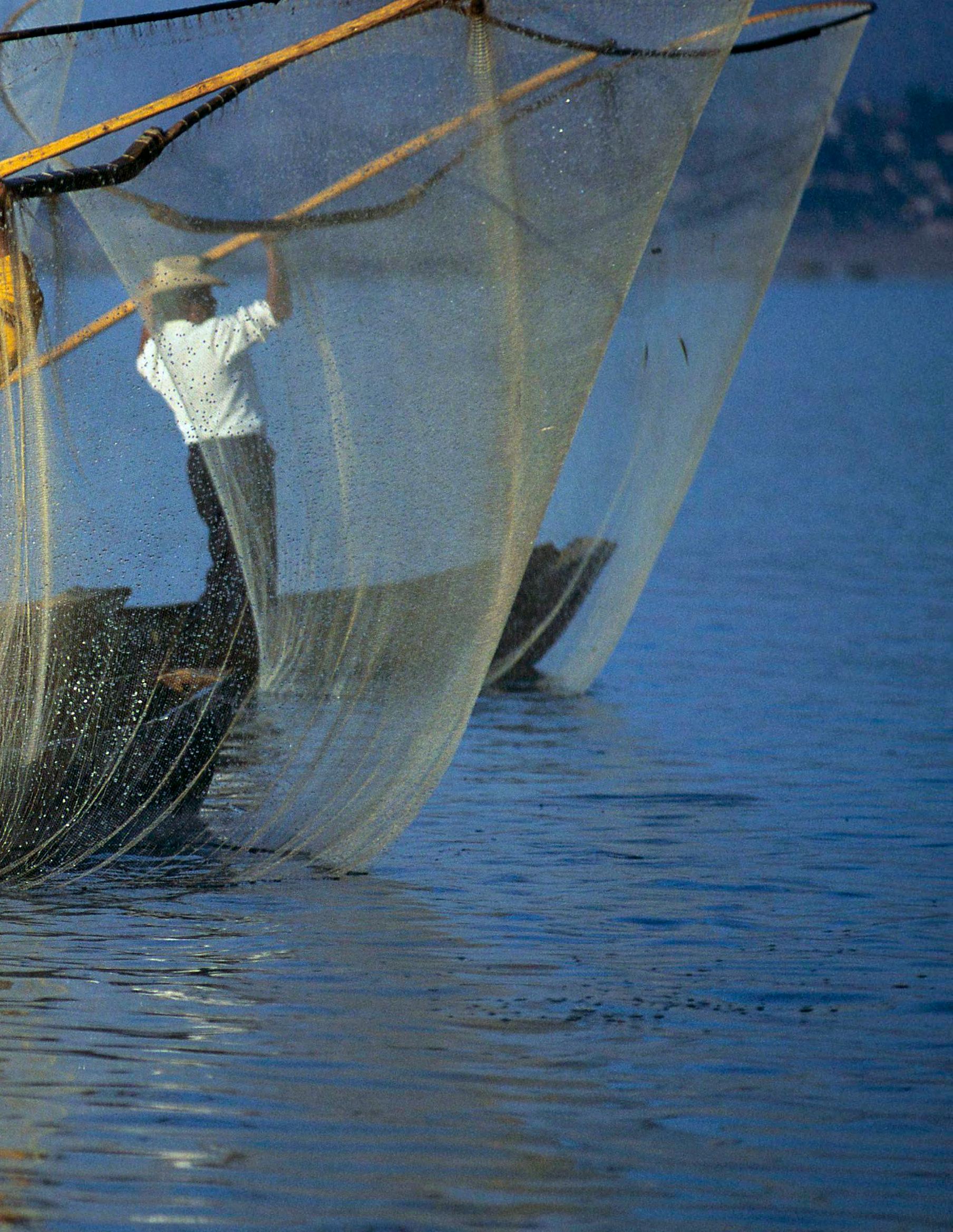
FEATURED PROJECT:
Reducing the Gender Gap in Bogota's Transport Sector
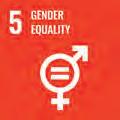
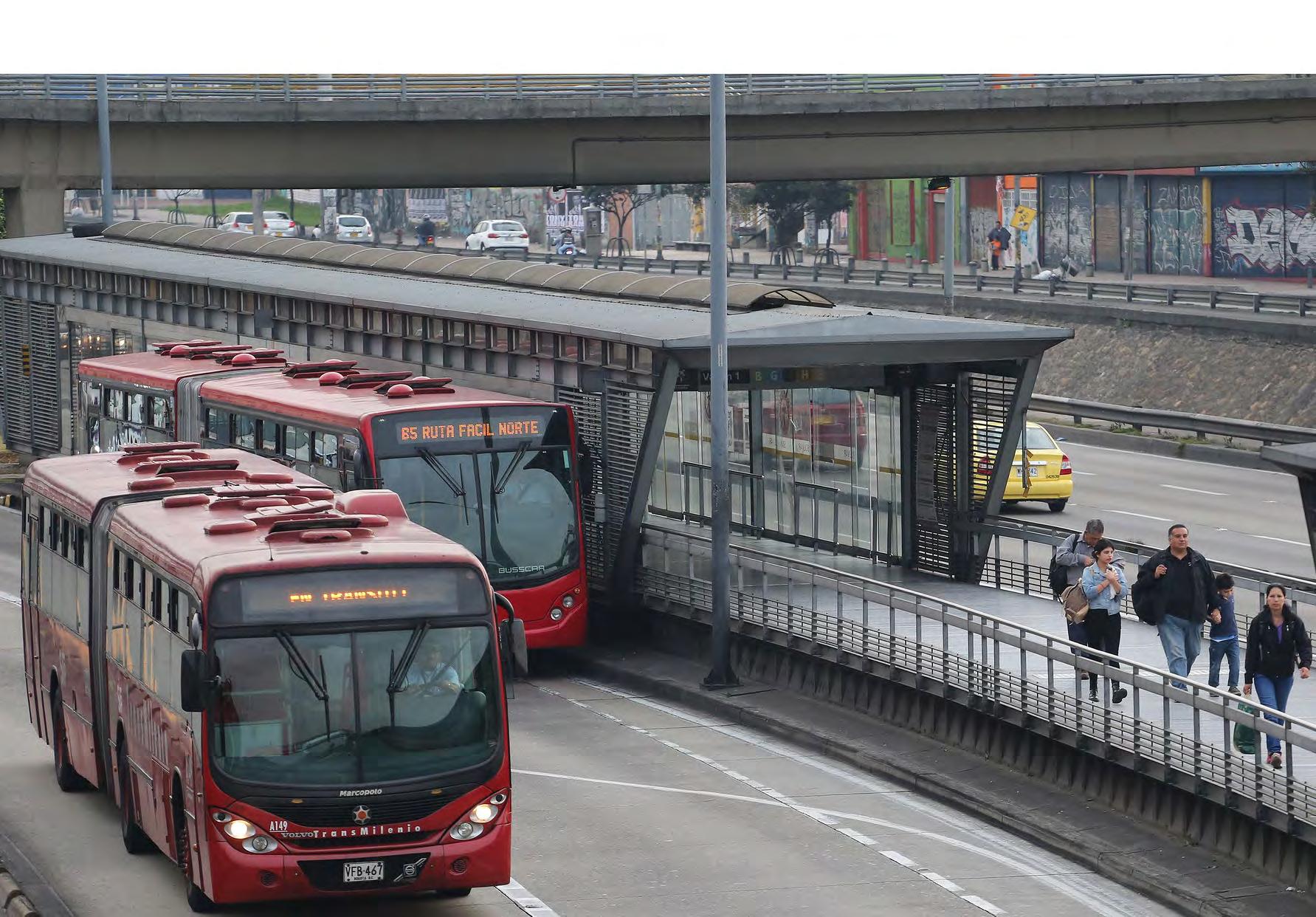
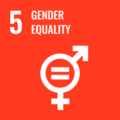
Women constitute only 14.5% of employees in Bogota’s transportation sector, so the Support to Bogota’s Metro Line 1 Project ($70m) project embeds mechanisms to hire more women, with a target least of at 20% of metro employees. The project also incorporates a reporting mechanism for victims of sexual harassment and an action protocol for metro police and staff to intervene.
IBRD Commitment Amount: US$ 70 million


Total Project Cost: US$ 4400.00 million
Approval Date: August 2, 2018
Project Status: Active (closing December 31, 2023)
Sector: Urban Transportation, Public Administration
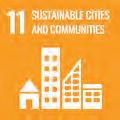
The transportation sector is a key area of engagement for the Bank in reducing

18 WORLD BANK BONDS FOR SUSTAINABLE DEVELOPMENT | IMPACT REPORT 2019
26 WORLD BANK BONDS FOR SUSTAINABLE DEVELOPMENT | IMPACT REPORT 2019
Photo credit: © Dominic Chavez / World Bank
FEATURED PROJECT:
Blue Economy: Reducing Marine Pollution in Waterways in Romania
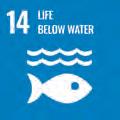
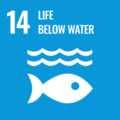
Romania is home to one-third of Europe’s farms. A majority of these farms keep animals without adequate storage facilities for animal waste collection. This contributes to pollution of groundwater with nitrates and bacteria, posing threats to the rural population that uses the groundwater for drinking. Romania has committed to comply with the EU Nitrates Directive requirements by reducing nutrient discharges to water bodies leading to the Danube River and Black Sea through integrated land and water management. Protecting the Black Sea from harmful pollution will result in a more productive, healthy, resilient, and sustainable blue economy.
IBRD Commitment Amount: US$52.39 million
Total Project Cost: US$54.58 million
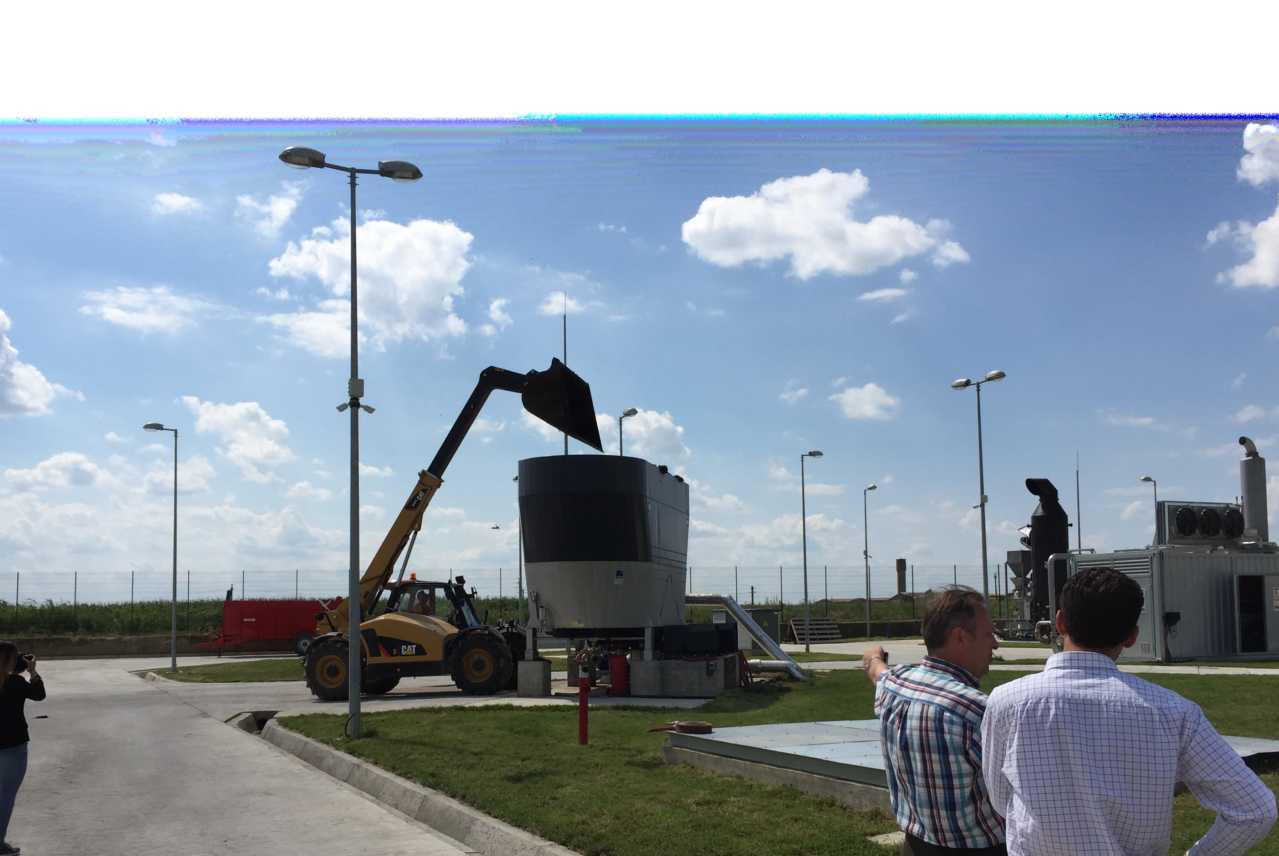
Approval Date: March 28, 2016
Project Status: Active (closing March 31, 2022)
Sector: Sanitation, Waste Management, Other Agriculture (Fishing/Forestry)
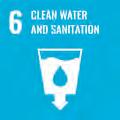
Over 100 communes have benefited from support under the first phase of the Integrated Nutrient Pollution Control Project, 11 sewerage systems and communal wastewater treatment plants were built, seedlings were planted on 182 hectares in 57 communities, and laboratory equipment were secured for water quality testing; a first Romanian pilot plant for biogas production from manure was also built. Over the past decade, the water quality and ecosystem of the Danube River and Black Sea basin have improved, benefiting marine and coastal ecosystems. Nitrogen and phosphorus emissions have also decreased by 20 percent and 50 percent respectively over the years.
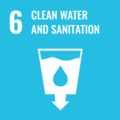
4 WORLD BANK BONDS FOR SUSTAINABLE DEVELOPMENT | IMPACT REPORT 2019 19
4 WORLD BANK BONDS FOR SUSTAINABLE DEVELOPMENT | IMPACT REPORT 2019 27
Photo credit: © Victor Neagu / World Bank
Providing Affordable Clean Energy in Egypt

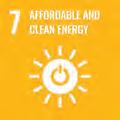
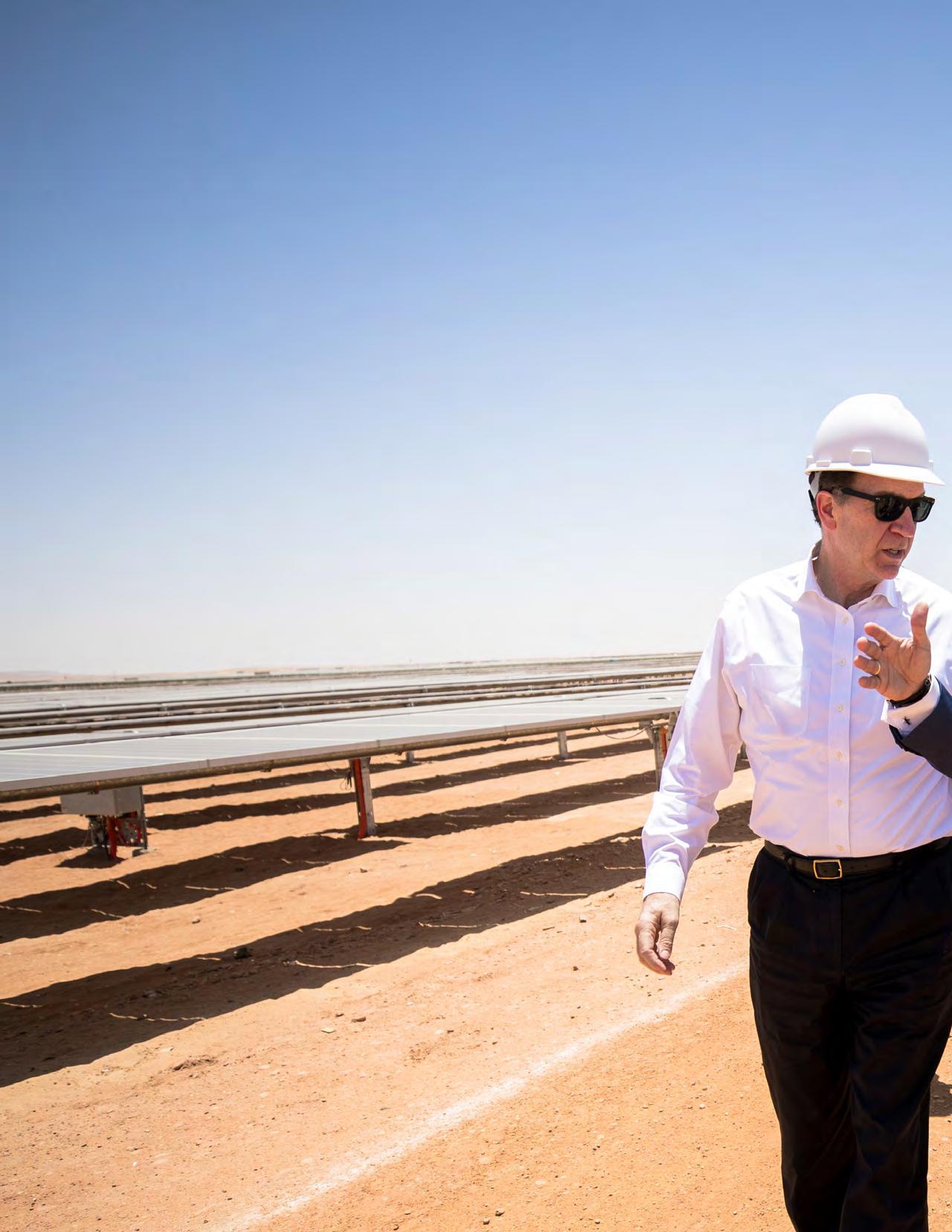
Reliant on fossil fuels for electricity, with an underdeveloped market for low-cost renewable energy, Egypt lacked clear business models and practices for reliable and more affordable energy. Fuel subsidies exacerbated the problem at seven percent of gross domestic product—more than government spending on social protection, health and education—and were not targeted at the poorest. Underinvestment in energy also moved Egypt from an energy exporter to an energy importer. Severe power shortages from 2012 to 2014 contributed to a sharp economic downturn.
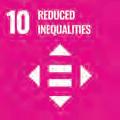
FEATURED PROJECT:
28 WORLD BANK BONDS FOR
| IMPACT REPORT 2019
Photo credit: © Dominic Chavez / World Bank
SUSTAINABLE DEVELOPMENT
IBRD Commitment Amount: US$115000 million
Total Project Cost: US$1150.00 million
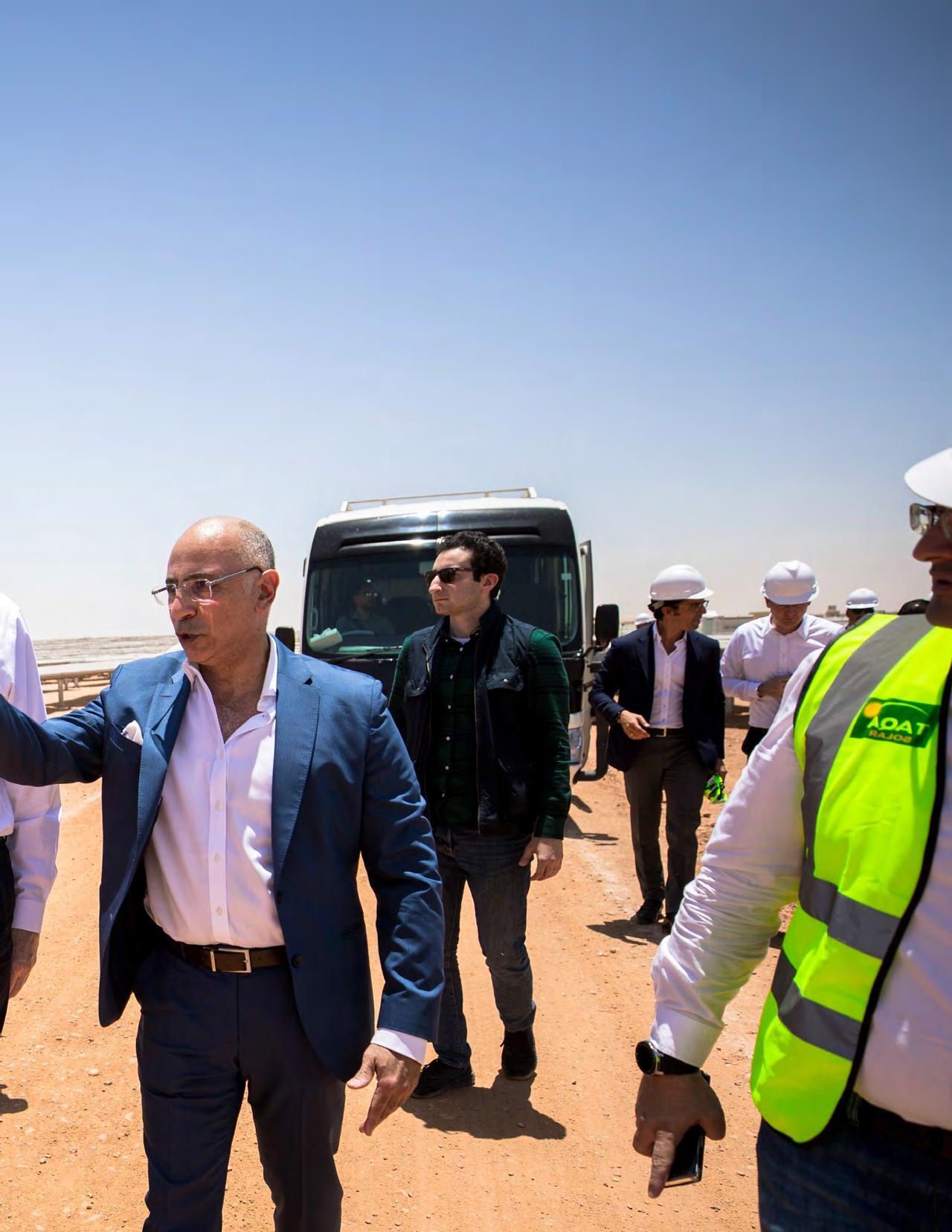
Approval Date: December 5, 2017
Project Status: CompletedSector:Energy&Extractives,OtherIndustry,Trade,andServices
The Fiscal Consolidation, Sustainable Energy & Competitiveness Programmatic Development Policy Financing series helped reduce energy subsidies as a percentage of GDP to 2.0% in FY2019, increase revenue collection, and enhance the business environment through a modern investment law and easing industrial license requirements. The World Bank Group provided technical and financial support that strengthened investor confidence and mobilized US$2 billion of private investment in renewable energy in line with its Maximizing Finance for Development approach to leverage private sector finance to bolster scarce public resources.
WORLD BANK BONDS FOR SUSTAINABLE DEVELOPMENT | IMPACT REPORT 2019 29
Sustainable Development Bond Process
Sustainable Development Bond Process
World Bank Sustainable Development Bonds are consistent with the Sustainability Bond Guidelines6, coordinated by the International Capital Market Association.
USE OF PROCEEDS The net proceeds from thesaleofbondsareusedbyIBRDtosupportthe financing of sustainable development projects and programs in the World Bank’s member countries (without being committed or earmarked for lending to, or financing of, particular projects or programs; the returns on the bonds are not linked to the performance of any particular project or program). Prior to use, the net proceeds will be invested by IBRD’s Treasury in accordance with IBRD’s liquid asset management investment policies. IBRD’s administrative and operating expenses are covered entirely by IBRD's various sources of revenue (net income); these consist primarily of interest margin, equity contribution, and investment income (as more fully described in theInformationStatement).
IBRD’sfinancingismadeavailablesolelytomiddleincome and creditworthy lower-income member countrieswhoareworkinginpartnershipwithIBRD to eliminate extreme poverty and boost shared prosperity, so that they can achieve equitable and sustainable economic growth in their national economies and find sustainable solutions to pressing regional and global economic and environmental problems. Projects and programs supported byIBRD are designed to achieve a positive social impact and undergo a rigorous review and internal approval process aimed at safeguarding equitable and sustainable economic growth. IBRD integrates the following five global themes into its lending activities helping its borrowing members create sustainable development solutions: climate change; gender; infrastructure, publicprivate partnerships and guarantees; knowledge management, and fragility,conflictand violence.
PROCESS FOR EVALUATION & SELECTION OF ELIGIBLE OPERATIONS
All projects supportedbytheWorldBankgothrougharigorous reviewandapprovalprocesstoensurethattheyalign with the WorldBank’smission and meet countries’ development priorities. The process includes: (i) screening to identify potential environmental or socialimpactsanddesigningpoliciesandconcrete actions to mitigate any such impacts; (ii) approval bytheBoardofExecutiveDirectors;and(iii)regular monitoring and evaluation. See Annex 2: WorldBank Project Cycle, for more detailed informationonthisprocess.
MANAGEMENT OF PROCESS
Theproceeds ofallWorldBankbondsareinvestedinaccordance with the World Bank’s conservative liquidity policy until they are used to support the financingof sustainable development projects and programs. Disbursement requests for eligible operations take place in accordance with IBRD’s established policies and procedures. Disbursements are often madeoveraperiodofseveralyears,dependingon wheneachproject/programmilestoneisreached.
REPORTING
The World Bank is committed to transparent reporting of its financingtosupport sustainable development projects and programs in member countries on an annual basis. This impact report follows market best practice and describes the operations supported by the financinggeneratedbyWorld Bankbondsissued duringthepreviousfiscalyear.Thisreportprovides information on allocation of bond proceeds and aggregatesresultsforclosedprojectsonaportfolio basisacrossarangeofmeasurableoutcomes.The report also outlines individual project details such as amount of financing,projectobjectives,and developmentindicatorsforclosedprojects.
/6 https://www.icmagroup.org/green-social-andsustainability-bonds/sustainability-bond-guidelines-sbg/
Notes:
ANNEX
4 WORLD BANK BONDS FOR SUSTAINABLE DEVELOPMENT | IMPACT REPORT 2019 53
1:
30 WORLD BANK BONDS FOR SUSTAINABLE DEVELOPMENT | IMPACT REPORT 2019
4,421,791 People benefiting from social safety net programs
Determining Project Eligibility
Determining Project Eligibility
158,471 People provided with essential health, nutrition, and population services
ll World Bank operations are designed to achieve positive environmental and social impacts and outcomes consistent with the World Bank Group’s twin goals and the SDGs. Operations are approved after an extensive internal review process, which integrates sustainability policies and environmental and social requirements.
AWorld Bank Sustainable Development Bonds are consistent with the Sustainability Bond Guidelines8, coordinated by the International Capital Market Association. All World Bank operations are designed to achieve positive environmental and social impacts and outcomes consistent with the World Bank Group’s twin goals and the SDGs. Operations are approved after an extensive internal review process, which integrates sustainability policies and environmental and social requirements.
This is complemented by comprehensive project disclosure, portfolio management and review processes that are designed to provide timely feedback to enhance, improve, and, if necessary, adjust operations to achieve positive impacts in line with desired outcomes.
TARGET POPULATIONS:
TARGET POPULATIONS

1,274,805 People provided with access to improved water sources
2,950,548 People provided with access to improved sanitation services
Target populations: World Bank projects aim to protect and empower vulnerable groups, including women and girls, the poor, disabled people, and youth and reduce poverty, improve living standards, and raise incomes and productivity in line with the World Bank’s development mandate and mission.
World Bank projects aim to protect and empower vulnerable groups, including women and girls, the poor, disabled people, and youth and reduce poverty, improve living standards, and raise incomes and productivity in line with the World Bank’s development mandate and mission.
This is complemented by comprehensive project disclosure, portfolio management and review processes that are designed to provide timely feedback to enhance, improve, and, if necessary, adjust operations to achieve positive impacts in line with desired outcomes.
1,305,681 People provided with improved urban living conditions
The list below provides examples of projects that meet the eligibility criteria to be supported by the World Bank’s Sustainable Development. Such eligible projects and activities include, but are not limited to, those which aim to:
The list below provides examples of projects that meet the eligibility criteria to be supported by the World Bank’s Sustainable Development. Such eligible projects and activities include, but are not limited to, those which aim to:
RESILIENCE
ELIGIBLE PROJECTS
Eligible Project Examples:
Improve health care, nutrition, and childhood development
Improve equitable access to education, raise students’ retention and completion rates, improve learning conditions in schools, train teachers and improve their foundational skills
3,330,267 MWh of annual energy/fuel savings
Improve the effectiveness of formal technical and vocational training, short-term skills development, and apprenticeship programs
Provide financial, technical and advisory support for countries that have decided to transition from coal to cleaner sources of energy
1,705,913 tCO2 eq. net GHG emissions reduced annually
Advance climate-smart agriculture, improve agricultural infrastructure and support services, strengthen food value chains, and increase market access for smallholder farmers
Advance food security
Strengthen social security, pension, and legal systems
Improve access for individuals and businesses to affordable financial products and services such as transactions, payments, savings, credit, and insurance
Support and improve access to affordable housing through regulatory and policy reform and improving access to finance
Create more and higher-quality jobs, and connect disadvantaged people to jobs by eliminating barriers and building skills
/8 https://www.icmagroup.org/green-social-andsustainability-bonds/sustainability-bond-guidelines-sbg/
Help resource-rich developing countries benefit from the increasing demand for minerals and metals, while ensuring mining is managed to minimize the environmental and climate footprint
Address biodiversity conservation or challenges of pollution and natural resource degradation
Prepare national plans and legislation to protect the environment and manage disaster risk, including pandemics
Contribute to climate mitigation (solar and wind installations, new technologies that reduce GHG emissions, rehabilitation of power plants and transmission facilities to reduce emissions, clean transportation, sustainable waste management, carbon reduction through reforestation and prevention of deforestation) and climate adaptation (protection against flooding; improvements in food security, climate-resilient agriculture, sustainable forest management, and prevention of deforestation).
Additional examples of eligible projects and activities can be found at https://www.worldbank.org/en/topic
Additional examples of eligible projects and activities can be found at https://www.worldbank.org/en/topic
4 WORLD BANK BONDS FOR SUSTAINABLE DEVELOPMENT | IMPACT REPORT 2019 17
Notes:
HUMAN CAPITAL
4 WORLD BANK BONDS FOR SUSTAINABLE DEVELOPMENT | IMPACT REPORT 2019 31
Assessing and Mitigating Environmental and Social Risks
Assessing and Mitigating Environmental and Social Risks
The World Bank is committed to supporting client countries in the development and implementation of projects that are environmentally and socially sustainable and to enhancing the capacity of developing countries’ environmental and social frameworks to assess and manage the environmental and social risks and impacts of projects.
The World Bank is committed to supporting client countries in the development and implementation of projects that are environmentally and socially sustainable and to enhancing the capacity of developing countries’ environmental and social frameworks to assess and manage the environmental and social risks and impacts of projects.
The World Bank Environmental and Social Framework (ESF) sets out the World Bank’s commitment to sustainable development, through a World Bank policy and a set of environmental and social standards for Investment Project Financing that are designed to support borrowers’ projects, with the aim of ending extreme poverty and promoting shared prosperity.
The World Bank Environmental and Social Framework (ESF) sets out the World Bank’s commitment to sustainable development, through a World Bank policy and a set of environmental and social standards for Investment Project Financing (IPF) that are designed to support borrowers’ projects, with the aim of ending extreme poverty and promoting shared prosperity.
This framework comprises:
This framework comprises:
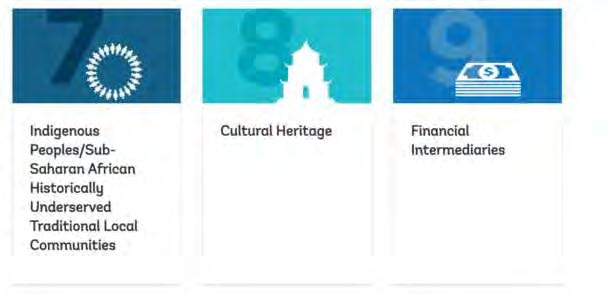

•A Vision for Sustainable Development, which sets out the World Bank’s aspirations regarding environmental and social sustainability;
• A Vision for Sustainable Development, which sets out the World Bank’s aspirations regarding environmentaland social sustainability;
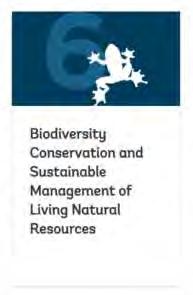
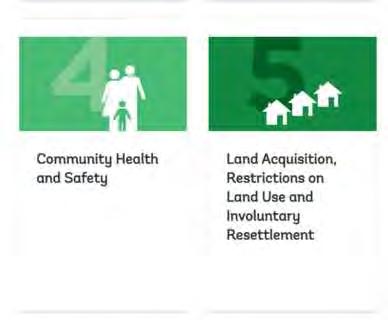
• The World Bank Environmental and Social Policy for Investment Project Financing, which sets out themandatory requirements that apply to the World Bank; and
•The World Bank Environmental and Social Policy for Investment Project Financing, which sets out the mandatory requirements that apply to the World Bank; and
• The Environmental and Social Standards, together with their Annexes, which set out the mandatoryrequirements that apply to the borrower and projects.

•The Environmental and Social Standards, together with their Annexes, which set out the mandatory requirements that apply to the borrower and projects.
The World Bank also undertakes Program-for-Results and Development Policy Financing which have their own rigorous environmental and social standards designed specifically for those lending operations which are consistent with the ESF.
The World Bank also undertakes Program-for-Results (P-for-R) and Development Policy Financing (DPF) which have their own rigorous environmental and social standards designed specifically for those lending operations which are consistent with the ESF.
CLOSER
4 WORLD BANK BONDS FOR SUSTAINABLE DEVELOPMENT | IMPACT REPORT 2019 21
A
LOOK:
32 WORLD BANK BONDS FOR SUSTAINABLE DEVELOPMENT | IMPACT REPORT 2019
ANNEX 4:
World Bank Exclusion List
World Bank Exclusion List
The World Bank does not support the financing of operations that involve:
• Alcoholic beverages
• Tobacco or tobacco processing machinery
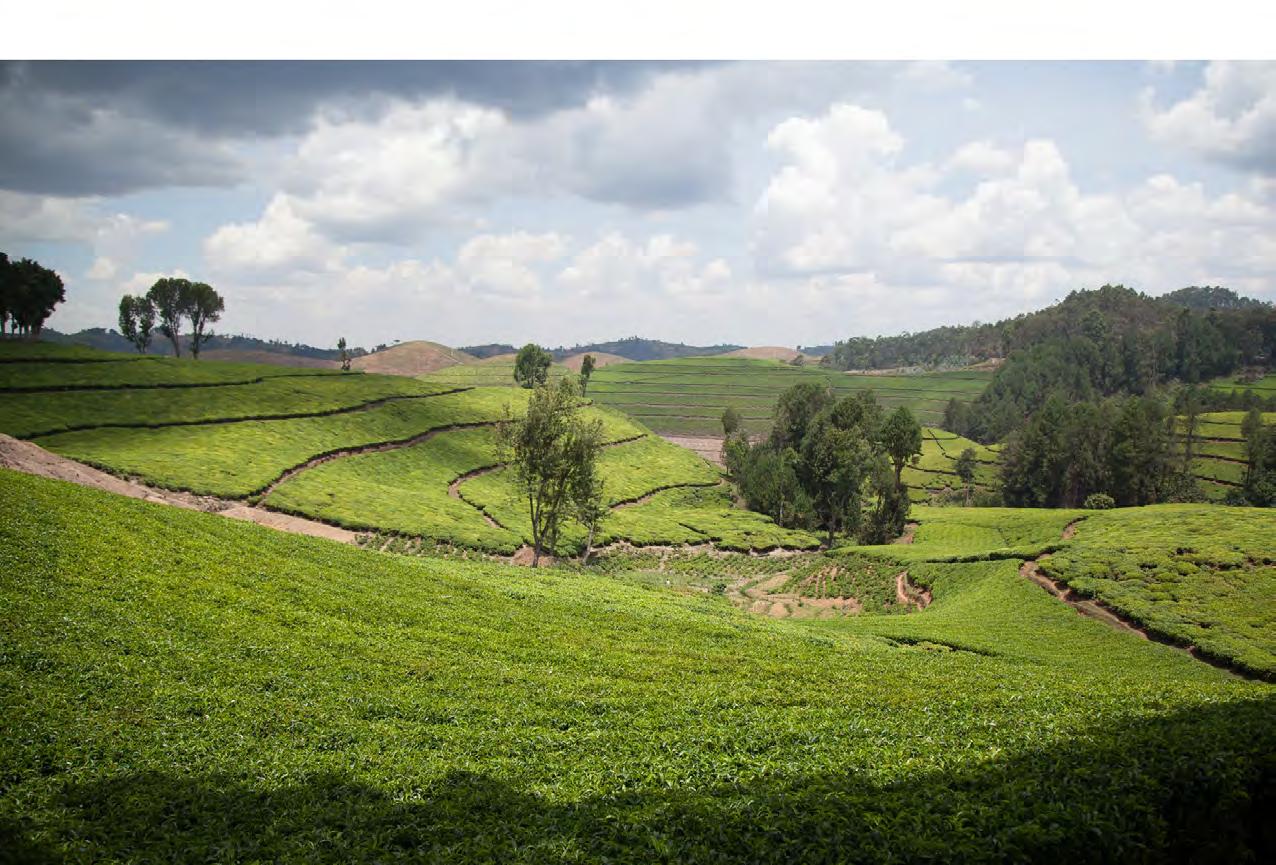
• Unworked or worked pearls, precious and semiprecious stones
• Jewelry made of gold, silver or platinum group metals (except watches and watch cases) and goldsmiths’ or silversmiths’ wares (including set gems)
• Gold, non-monetary (excluding gold ores and concentrates)
• Radioactive and associated materials
• Nuclear reactors, and parts thereof; fuel elements (cartridges), non-irradiated, for nuclear reactors
OTHER EXCLUDED AREAS INCLUDE:
• Goods intended for a military or paramilitary purpose or for luxury consumption
• Environmentally hazardous goods, whose
UN Security Council taken under Chapter VII of the Charter of the United Nations, with respect to which the World Bank determines that corrupt, fraudulent, collusive, or coercive practices were engaged in by representatives of the member country or other recipient of the financing made available by the World Bank, without the member country (or other such recipient) having taken timely and appropriate action satisfactory to the World Bank to address such practices when they occur.
FOSSIL FUELS:
The World Bank is not financing coal-fired power generation and has not financed a new coalfired power plant since 2010. The Bank will support countries transitioning away from coal by helping close coal mines and ensure a just transition for affected communities. The World Bank will no longer finance upstream oil and gas
58 WORLD BANK BONDS FOR SUSTAINABLE DEVELOPMENT | IMPACT REPORT 2019 4 WORLD BANK BONDS FOR SUSTAINABLE DEVELOPMENT | IMPACT REPORT 2019 33 Photo credit:
A’Melody
/ World Bank
©
Lee
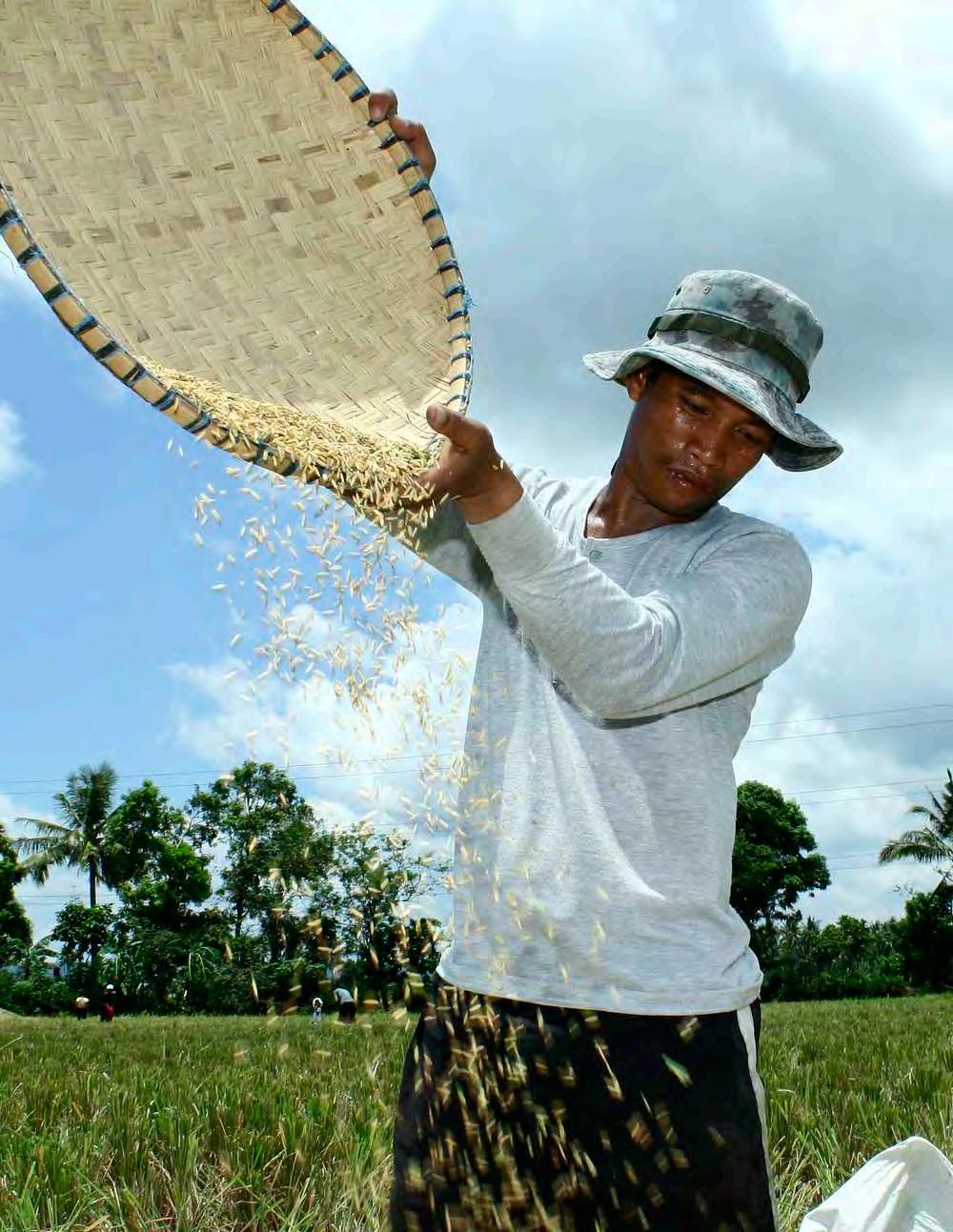 Photo credit: © Danilo Pinzon / World Bank
Photo credit: © Danilo Pinzon / World Bank
Project-by-Project Reporting
Results & Committed & Allocated Amounts Projects Completed in FY19 by Sector
Results & Committed & Allocated Amounts for Projects Approved and Disbursing in FY18 & FY19
Agriculture, Fishing & Forestry
Education
Energy & Extractives
Financial Sector
Health
Industry, Trade & Services
Information & Communications
Public Administration
Social Protection
Transportation
Water, Sanitation & Waste Management
Results should be read in conjunction with Annex 2, which describes the reporting approach.
Results should be read in conjunction with Annex 1, which describes the reporting approach. Net proceeds of a specific World Bank bond are not committed or earmarked for lending to, or financing of, any particular projects or programs, and returns on a specific World Bank bond are not linked to the performance of any particular project or program.
4 WORLD BANK BONDS FOR SUSTAINABLE DEVELOPMENT | IMPACT REPORT 2019 23
4 WORLD BANK BONDS FOR SUSTAINABLE DEVELOPMENT | IMPACT REPORT 2019 35
Agriculture, Fishing & Forestry
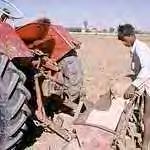
# Link to More Information
1
Project Name (Number | Year/s Loans Approved) and Description
Third South West Indian Ocean Fisheries Governance and Shared Growth Project (SWIOFish3) (P155642 | FY18): improve management of marine areas and fisheries in targeted zones and strengthen fisheries value chains in the Seychelles.

2 Hunan Integrated Management of Agricultural Land Pollution Project (P153115 | FY18): demonstrate a risk-based integrated approach to managing heavy metal pollution in agricultural lands for safety of agricultural production areas in selected counties.
3 Zhejiang Qiandao Lake and Xin'an River Basin Water Resources and Ecological Environment Protection Project (P159870 | FY18): strengthen integrated pollution and watershed management and increase access to improved water supply in selected landscapes in support of Zhejiang's program for the protection of Qiandao Lake and Xin’an River Basin.
4 Guangxi Poverty Reduction Program for Results (P163138 | FY18): enhance the impact and efficiency of the Guangxi Consolidated Poverty Reduction Program (CPRP) in the Targeted Counties.
5 Maharashtra Project on Climate Resilient Agriculture (P160408 | FY18): enhance climate-resilience and profitability of smallholder farming systems in selected districts of Maharashtra.
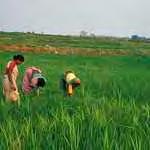
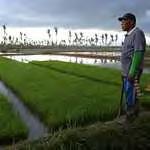

6 National Agricultural Higher Education Project (P151072 | FY18): support Participating Agricultural Universities and ICAR in providing more relevant and higher quality education to Agricultural University students.



7 Meghalaya Community-led Landscapes Management Project (P157836 | FY18): strengthen community-led landscapes management in selected landscapes in the state of Meghalaya.
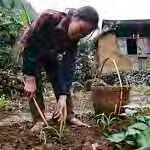

24 WORLD BANK BONDS FOR SUSTAINABLE DEVELOPMENT | IMPACT REPORT 2019
Year/ FY Approved Country Project Life* (Years)
FY18 Africa 20
FY18 China 26
FY18 China 25
FY18 China 26
FY18 India 24
FY18 India 19
FY18 India 15 36 WORLD BANK BONDS FOR SUSTAINABLE DEVELOPMENT | IMPACT REPORT 2019
• 5,000,000 ha of sustainable-use marine protected areas
• 44% increase in key demersal indicator species stable or rebuilding in the Mahé Plateau fisheries
• 40% increase in by-catch landed and sold in the Seychelles resulting in expansion of value chains, job creation and increased revenues in the country
• 8,000 ha of agricultural lands managed under the project$100,000,000
• 218,100 people provided with access to improved water sources
• Pesticide consumption reduced by 92 tons per year in project areas
• 10,470 ha of degraded monoculture plantations converted to mixed stands with multiple species
• 2,260 ha of denuded forests fully planted with multiple tree and shrub species
• 3,959 RMB increase in production income of registered poor households in targeted counties
• 114,600 registered poor persons with new piped drinking water connections
• 28 additional targeted counties with newly accredited poverty countries with poverty reduction leading enterprises
• 100,000 farmers reached with agricultural assets or services, 30,000 of which are female
• 20% increase in water productivity at farm level: from 0.23 to 0.276 kg per m³
• Annual reduction of 5,502,523 tCO2eq (1.9tCO2eq. per year per ha)
• 1,320,000 farmers reached with agricultural assets or services
• 1,272,800 farmers adopting improved agricultural technology
• 624,000 ha provided with new/improved irrigation or drainage services
• Improved availability for 83,900,000 m³ of surface water storage capacity for agriculture
• 90,000 project beneficiaries, 50% of which are female
• 18 accredited agricultural universities with revised norms and standards
• Increase by 51.5% in agricultural universities revenue generation
• 31,510 ha of land area under sustainable management practices
• 12,585 ha of forest area brought under management plans
• 400 villages supported with capacity-building package in Natural Resource Management
• 100,000 ultimate project beneficiaries
4 WORLD BANK BONDS FOR SUSTAINABLE DEVELOPMENT | IMPACT REPORT 2019 25 Target Resultsa, IBRD Original Commitment IBRD Net Commitmentb IBRD Disbursement FY19c IBRD Total Disbursement Total Project Financing IBRD%d
$5,000,000 $5,000,000 $579,683 $1,237,898 $15,292,110 33%
$100,000,000 $3,000,000 $3,250,000 $111,940,000 89%
$150,000,000 $150,000,000 $15,000,000 $15,375,000 $293,460,000 51%
$400,000,000 $400,000,000 $100,000,000 $101,697,556 $400,000,000 100%
$420,000,000 $420,000,000 $2,624,466 $4,160,100 $599,550,000 70%
$82,500,000 $82,500,000 $14,721,788 $14,928,038 $165,000,000 50%
$48,000,000 $48,000,000 $207,148 $327,148 $60,000,000 80% 4 WORLD
DEVELOPMENT | IMPACT REPORT 2019 37
BANK BONDS FOR SUSTAINABLE
Agriculture, Fishing & Forestry
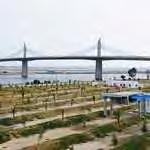
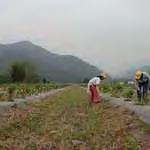
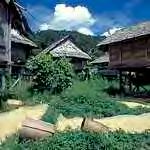
8 Tamil Nadu Irrigated Agriculture Modernization Project (P158522 | FY18): enhance productivity and climate resilience of irrigated agriculture, improve water management, and increase market opportunities for farmers and agro-entrepreneurs in selected sub-basin areas of Tamil Nadu.

9 Integrated Irrigation & Agriculture Transformation Project (P160463 | FY19): enhance agricultural productivity, profitability and climate resilience of smallholder farmers in selected districts of Andhra Pradesh.
10 Strategic Irrigation Modernization and Urgent Rehabilitation Project (P157585 | FY18): improve irrigation services and strengthen accountability of irrigation schemes management in selected areas.
11 Program to Accelerate Agrarian Reform (P160661 | FY19): establish clarity on actual land rights and land use at the village level in the target areas.
12 Second Institutional Development and Agriculture Strengthening Project (P164424 | FY18): improve the competitiveness of agriculture and fisheries in Montenegro through enhanced delivery of government support in alignment with EU accession requirements.
13 Irrigated Agriculture Intensification Project (P160245 | FY18): improve the reliability and efficiency of the irrigation and drainage services and strengthen market linkages for irrigated products in selected irrigation schemes.




38 WORLD BANK BONDS FOR SUSTAINABLE DEVELOPMENT | IMPACT REPORT 2019
Link to
Information Project Name (Number
Year/s
Approved) and Description Year/ FY Approved Country Project Life* (Years)
#
More
|
Loans
FY18 India 22
FY19 India 24
FY18 Indonesia 16
FY19 Indonesia 13
FY18Montenegro 25
FY18 Tunisia 28
• 160,000 ha provided with improved irrigation or drainage services
• 75,000 ha under climate-resilient technologies
• 500,000 project beneficiaries
• 100,000 ha under improved agronomic practices
• 25,100 ha under improved fish production
• 4,741 tank irrigation systems modernized
• 284,000 tCO2eq. avoided annually
• 200,000 farmers reached with agricultural assets or services, 50,000 of which are female
• Farmer's income increased by 3,931 INR
• 90,000 ha provided with new/improved irrigation or drainage services
• 276,000 area provided with new/improved irrigation or drainage services
• Reduced net annual average emissions by 439,743 tons of CO2 eq
• Crop intensity increased by 20%
• 300,000 farmer households provided with improved irrigation services
15.6% increase in the share of project target area land parcels mapped in a parcel map (equivalent to 4,300 land parcels mapped)
• 1,200 project beneficiaries (landholders, concessionaires, government agencies, community members) in the project target areas with their land parcels mapped
• 43% increase in the share of target areas with available and accessible geospatial data
• 14% increase in the share of project target area land rights registered to the land register
• 20% increase in sales per productive unit supported by the project
• 1,500 farmers reached with agricultural assets or services, 150 of which are female
• 5,000 days of training provided
• Volume of fish produced within Montenegro quotas increased by 500 metric tons per year
• 50% reduction in water service disruption
• 15% increase in irrigation system efficiency
• 25,900 ha provided with new/improved irrigation or drainage services
• 1,000 farmers reached with agricultural assets or services, 200 of which are female
• 3,500 farmers provided with new or improved irrigation and drainage services
4 WORLD BANK BONDS FOR SUSTAINABLE DEVELOPMENT | IMPACT REPORT 2019 39 Target Resultsa, IBRD Original Commitment IBRD Net Commitmentb IBRD Disbursement FY19c IBRD Total Disbursement Total Project Financing IBRD%d
$318,000,000 $318,000,000 $42,978,085 $48,854,391 $455,800,000 70%
$172,200,000 $172,200,000 $28,000,000 $28,430,500 $245,800,000 70%
$250,000,000 $250,000,000 $5,988,873 $5,988,873 $578,000,000 43% •
$200,000,000 $200,000,000 $3,744,948 $3,744,948 $240,000,000 83%
$34,890,000 $34,890,000 $2,319,200 $2,407,460 $34,890,000 100%
$140,000,000 $140,000,000 $3,361,200 $3,681,637 $170,500,000 82%
Odisha Higher Education Program for Excellence and Equity (P160331 | FY18): improve the quality of and students' equitable access to selected institutions and enhance governance of the higher education system in Odisha.

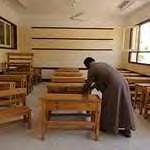
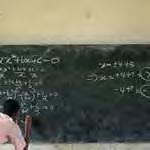

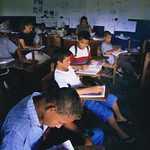
40 WORLD BANK BONDS FOR SUSTAINABLE DEVELOPMENT | IMPACT REPORT 2019 Education # Link to More Information Project Name (Number | Year/s Loans Approved) and Description Year/ FY Approved Country Project Life* (Years) 14
FY18):
FY18 Brazil 21 15 Strengthening of State Universities in Chile
FY18): improve quality and equity within State Universities and to strengthen their institutional capacity to address regional and national development challenges. FY18 Chile 12 16 Guangdong Compulsory Education
FY18): improve learning
and teaching
selected public primary and junior secondary schools in project counties. FY18 China 26 17 Supporting
FY18 Egypt, Arab Republic of 35 18
FY18 India 18
Support to Upper Secondary Reform in Brazil Operation (P163868 |
strengthen the capacity of the state secretariats of education to implement the upper secondary reform, prioritizing vulnerable schools, and to increase the Index of Basic Education Development in targeted full-time upper secondary schools in Brazil’s territory.
(P163437 |
Project (P154621 |
facilities
quality in
Egypt Education Reform Project (P157809 | FY18): improve teaching and learning conditions in public schools.
• 27 States where at least 50 percent of vulnerable schools have implemented the New Curriculum
• 18% increase in the Basic Education Development Index (IDEB) in targeted FTS (Full-time School)
• 27 States where the average absolute gender gap of enrollment in formative itineraries is less than 5%
• 2,400,000 students benefiting from direct interventions to enhance learning
• Decrease by 1% in dropout rate of 3rd year vulnerable students
• 1,048 Peer reviewed publications at State Universities
• 7 institutions that improve their accreditation level
• 20% of last year students who have received quality career services
• 22,800 additional teachers trained
• 532,000 students benefiting from direct interventions to enhance learning
• 15,200 classrooms with ICT installed
• 50% increase in kindergartens that reach higher quality standards according to the Quality Assurance System
• 35% increase in teachers demonstrating improved teaching practices
• First cohort of students graduates from secondary education under the new GPA based assessment and certification system
• Education Technology entity established and fully operational
• 90% of existing classroom spaces refurbished and equipped
• 15% increase in the number of selected colleges that have improved their NAAC (National Assessment and Accreditation Council) grade from the previous cycle of accreditation
• 10% increase in on-time graduation rate of students in undergraduate degree programs in selected institutions
• 165,500 students beneficiaries, 83,400 of which are female
Target Resultsa, IBRD Original Commitment IBRD Net Commitmentb IBRD Disbursement FY19c IBRD Total Disbursement Total Project Financing IBRD%d
$250,000,000 $250,000,000 $43,000,000 $43,625,000 $250,000,000 100%
$50,126,000 $50,126,000 $10,000,000 $10,125,315 $375,126,000 13%
$120,000,000 $120,000,000 $5,000,000 $5,300,000 $279,400,000 43%
$500,000,000 $500,000,000 $125,000,000 $126,250,000 $2,000,000,000 25%
$119,000,000 $119,000,000 $27,325,746 $39,808,937 $1,724,000,000 7% 4 WORLD BANK BONDS FOR SUSTAINABLE DEVELOPMENT | IMPACT REPORT 2019 41
Workforce Development Project (P154525 | FY18): improve the quality and relevance of training at priority Industrial Training Institutes (ITIs) and to increase the number of labor-market-relevant workers through short-term training in Uttarakhand.
Education Reform Support Program (P162407 | FY18): expand access to early childhood education, and to improve student assessment and teaching and learning conditions for Jordanian children and Syrian refugee children.



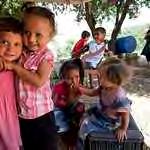

42 WORLD BANK BONDS FOR SUSTAINABLE DEVELOPMENT | IMPACT REPORT 2019 Education # Link to More Information Project Name (Number | Year/s Loans Approved) and Description Year/ FY Approved Country Project Life* (Years) 19 Uttarakhand
FY18 India 17 20
FY18 Jordan 35 21
FY19 Morocco 25 22
FY18 Tunisia 28
Supporting the economic inclusion of youth (P151169 | FY19): increase access to economic opportunities for youth in the project area.
Strengthening Foundations for Learning Project (P162297 | FY18): improve learning conditions in public preschools and primary schools, and to increase access to public preschool education in selected districts.
• 11% increase in job placement rate among graduates of priority ITIs within six months of training completion
• 2,035 additional students enrolled in labor market relevant trades in priority ITIs
• 32,000 of target trainees who obtain certification from a short term training course
• 64,000 project beneficiaries, 40,000 of which are shortterm training students
• 18 communication and awareness campaigns conducted
• 24,000 ITI students
• 30,000 Jordanian children and Syrian refugee children enrolled in kindergarten level 2
• 5% point reduction in the dropout rate of Syrian refugees
• 70% of schools with high proportion of Syrian refugees implemeting the socioemotional learning program
• 400 public and private kindergartens that have developed and implemented quality improvement plan
• 50,000 K-12 grade teachers trained and certified
• 9,500 beneficiaries of training activities (apprenticeship and qualification/retraining) who are inserted after project intervention, 41% of which are women and 30% are inhabitants of rural areas
• 1,500 formal enterprises created by project beneficiaries
• 16,000 beneficiaries of youth employment centers services who are inserted after project intervention
• 4,984 additional children enrolled in public preschools in targeted districts
• 2,000 preschool teachers trained on the core professional development program for early childhood education
• 3,000 school directors and deputy directors that have completed the new leadership program
• 250 preschool classrooms built in selected districts
4 WORLD BANK BONDS FOR SUSTAINABLE DEVELOPMENT | IMPACT REPORT 2019 43 Target Resultsa, IBRD Original Commitment IBRD Net Commitmentb IBRD Disbursement FY19c IBRD Total Disbursement Total Project Financing IBRD%d
$74,000,000 $74,000,000 $800,000 $985,000 $92,500,000 80%
$147,700,000 $147,700,000 $738,500 $57,824,550 $200,000,000 74%
$55,000,000 $55,000,000 $10,724,670 $10,859,660 $110,100,000 50%
$100,000,000 $100,000,000 $8,910,899 $9,141,050 $130,000,000 77%
Energy & Extractives


Jharkhand Power System Improvement Project (P162086 | FY19): increase the transmission capacity of electricity network in the state of Jharkhand and strengthen the institutional capacity of state-owned power transmission and distribution utilities.

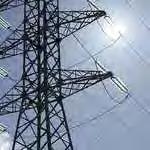

Energy Efficiency Scale-up Program (P162849 | FY18): scale up energy savings in residential and public sectors, strengthen Energy Efficiency Services Limited's institutional capacity, and enhance its access to commercial financing.

Second Equitable Growth & Job Creation Programmatic Development Policy Financing (P168130 | FY19): support Jordan to set foundations to reduce business costs and improve market accessibility, create more flexible and integrated labor markets and provide better and more efficient social assistance, and improve fiscal sustainability and take more informed decisions regarding risk.
Second Energy Efficiency Project (P165509 | FY18): improve energy efficiency in health sector buildings, and to develop and demonstrate a sustainable financing model.


27 National Transmission Modernization Project (P154987 | FY18): increase the capacity and reliability of selected segments of the national transmission system in Pakistan and modernize key business processes of the National Transmission and Dispatch Company.
Gas Storage Expansion Project (P162727 | FY18): increase the reliability and security of gas supply in Turkey by expanding underground gas storage capacity in the country.
44 WORLD BANK BONDS FOR SUSTAINABLE DEVELOPMENT | IMPACT REPORT 2019
# Link to More Information Project Name (Number | Year/s Loans Approved) and Description Year/ FY Approved Country Project Life* (Years) 23
FY19 India 25 24
FY18 India 19
25
FY19 Jordan 34
26
FY18 Montenegro 15
FY18 Pakistan 25
28
FY18 Turkey 23
• 10,200 GWh of electricity wheeled through Jharkhand Urja Sancharan Nigam Limited network for supply to consumers in the State
• 90% increase in consumers serviced through upgraded commercial system
• 2,400,000 KVA of increased transformation capacity of the power transmission network in the state under the project
• 2,000 km of transmission lines constructed
• 25 transmission substations constructed
• 205,500 GWh of projected lifetime energy savings from LED bulbs, tube lights, energy efficient ceiling fans and LED street lights sold via Energy Efficiency Services Limited (EESL) programs
• USD200,000,000 of commercial financing leveraged by the IBRD guarantee
• Sustainable Development Unit and report on implementation of updated manual covering all EESL programs under implementation
• 166,100,000 metric tons of avoided CO2 emissions associated with projected lifetime savings from products sold through EESL programs
• 2.5% increase in FDI in services as a percent of total investments facilitated by Jordan Investment Commission
• Guaranteed exports as a percentage of total exports more than doubled
• 100% of government entities prepare annual procurement plans at least one month before the end of the fiscal year
• 3% increase in female labor force participation rate
• 85,000 additional households covered by the National Aid Fund
• 15,000 households provided with electricity support benefits
• 3,981 MWh of annual energy savings
• 37,333 tons of CO2 eq. of emissions reduced annually
• 18 buildings retrofitted annually
• 1,200,000 USD captured energy cost savings annually
• 220,000 potential patients and 2,000 staff benefiting
• 50% reduction in frequency of forced outages per substation
• Duration of forced outages per substation reduced by 60% (equivalent to 1,013 minutes)
• 12,516,000 KVA of substation capacity of the system added
• 2 tons of GHG emissions reduced annually
• 131 km of transmission lines constructed or rehabilitated
• Reduction of gas supply curtailments due to available gas storage at the Tuz Golu Expansion Plant from 1,500,000 m³ to 0 m³
• 67% reduction of spot liquefied natural gas purchases due to available gas storage at the Tuz Golu Expansion Plant
• Increased gas storage capacity through the Tuz Golu Gas Storage Expansion Plant by 4,000,000 m³
• 4,000,000 Turkish gas consumers benefitting from gas supply
4 WORLD BANK BONDS FOR SUSTAINABLE DEVELOPMENT | IMPACT REPORT 2019 45 Target Resultsa, IBRD Original Commitment IBRD Net Commitmentb IBRD Disbursement FY19c IBRD Total Disbursement Total Project Financing IBRD%d
$310,000,000 $310,000,000 $10,603,384 $11,378,384 $465,200,000 67%
$220,000,000 $220,000,000 $83,959,716 $84,509,716 $1,348,000,000 16%
$1,450,000,000 $1,450,000,000 $725,000,000 $728,625,000 $1,450,000,000 100%
$7,390,000 $7,390,000 $402,483 $419,982 $8,997,800 82%
$425,000,000 $425,000,000 $136,787 $1,199,287 $536,330,000 79%
$600,000,000 $600,000,000 $55,197,917 $56,697,917 $2,735,000,000 22%
Financial Sector

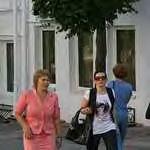
32 State Owned Financial Institutions Reform Project (P156837 | FY18): improve the performance of Banka Postanska Stedionica AD Beograd and promote the reform of development finance institutions and other state-owned financial institutions.
33 Inclusive Access to Finance (P163225 | FY18): improve access to longer-term finance for women-inclusive enterprises and enterprises in less developed sub-regions affected by the influx of Syrians under temporary protection.
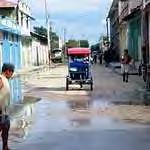

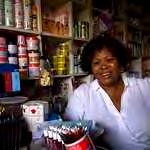
46 WORLD BANK BONDS FOR SUSTAINABLE DEVELOPMENT | IMPACT REPORT 2019
# Link to More Information Project Name (Number | Year/s Loans Approved) and Description Year/ FY Approved Country Project Life* (Years) 29 MSME Access to Finance
FY18): improve access to finance for private
and
governance and the institutional
the Development Bank of the Republic of Belarus. FY18 Belarus 16 30 Access to Finance for MSMEs (P152307 | FY18): improve access to finance for micro, small, and medium enterprises. FY18 Jamaica 30 31 Financial Inclusion and Digital Economy Project (P168587 | FY19): foster financial inclusion and contribute to digital transformation for individuals, enterprises, and entrepreneurs. FY19 Morocco 25
FY18 Serbia 15
FY18 Turkey 29
Project (P152276 |
MSMEs
enhance
capacity of
• Governance and business model of Development Bank of the Republic of Belarus (DBRB) strengthened
• 170% increase in DBRB MSME loan portfolio provided through participating financial institutions
• 150 MSME beneficiaries that obtained credit
• US$56,000,000 of loans disbursed
• 15 SMEs getting access to risk capital through the SME Fund
• 1,100 guarantees issued for MSME loans through the improved Credit Enhancement Facility
• US$10,000,000 of private capital mobilized."
• 0.8% increase in gross loan portfolio for the microfinance sector
• Moroccan dirham (MAD) 0.6 billion increase in cumulative Tamwil El Fellah (agriculture development financing corporation) loans disbursed
• 75% of payment companies reporting genderdisaggregated performance data to Central Bank of Morocco
• 50,000 independent professionals, selfemployed individuals, and non-salary individuals with health insurance coverage
• MAD 2 billion of Sukukcertificate issuances (Sharia compliant bond)
• 3 insurance companies issuing Takafulproducts (Sharia compliant insurance)
• 20,000 mobile/"m"-wallets issued
• 2.6% increase in fixed broadband penetration as a percentage of households
• 3% increase in rural households with Internet access
• The new electronic portal is operational
• 2 business angel networks that have been certified by the Central Guarantee Agency
• 30 start-up projects submitted to business angels for financing
• 60% decrease in Banka Postanska Stedionica gross amount of performing credit exposures to medium and large private sector enterprises compared to end-2016
• 70% reduction in state-owned non-performing loans compared to end-2016
• Adopted a strategy for development finance
• Increased from 0 to >1 the ratio of the average maturity of SME sub-financing under the project, over the average maturity of the participating financial institution's SME portfolio not financed under the project
• Increased from 0 to >1 the ratio of the average maturity of large enterprise sub-financing under the project, over the average maturity of the borrower's large enterprise portfolio not financed under the project
• 240 SME beneficiaries financed under the project
• 40 large enterprise beneficiaries financed under the project
4 WORLD BANK BONDS FOR SUSTAINABLE DEVELOPMENT | IMPACT REPORT 2019 47 Target Resultsa, IBRD Original Commitment IBRD Net Commitmentb IBRD Disbursement FY19c IBRD Total Disbursement Total Project Financing IBRD%d
$60,000,000 $60,000,000 $7,243,488 $7,243,488 $60,000,000 100%
$15,000,000 $15,000,000 $2,375,205 $2,412,705 $15,000,000 100%
$700,000,000 $700,000,000 $683,523,643 $685,248,044 $700,000,000 100%
$50,000,000 $50,000,000 $5,115,793 $5,232,003 $56,000,000 89%
$400,000,000 $400,000,000 $75,000,000 $76,000,000 $400,000,000 100%
System Performance Strengthening Project (HSPSP) (P160948 | FY18): increase the utilization and the quality of health care services in target provinces and municipalities.
35 Health Service Delivery Network Project (P164453 | FY18): improve access to, and quality of, health service delivery in selected health networks.
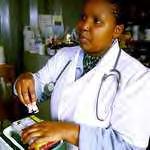
Transforming Egypt's Healthcare System Project (P167000 | FY18): improve the quality of primary and secondary health care services, enhance demand for health and family planning services, and support the prevention and control of Hepatitis C.
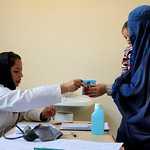
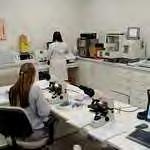
37 Supporting Primary Health Care Reform (P164277 | FY18): strenghten the performance of Indonesia’s primary health care system.
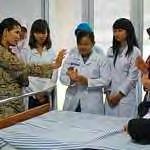
Primary Health Care System Strengthening Project (P163721 | FY18): increase the utilization and quality of primary health care services, with an emphasis on detection and management of non-communicable diseases in high-risk population groups, in selected areas of the country.
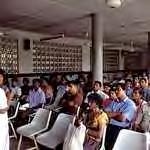
48 WORLD BANK BONDS FOR SUSTAINABLE DEVELOPMENT | IMPACT REPORT 2019
# Link to More Information Project Name (Number | Year/s Loans Approved) and Description Year/ FY Approved Country Project Life* (Years) 34
FY18 Angola 30
FY18 Bolivia 24
Health
Health
36
FY18 Egypt, Arab Republic of 35
FY18 Indonesia 14
38
FY18 Sri Lanka 33
• 558,000 child health consultations in the 13 Child Health Expansion municipalities
• 60 health units implementing the minimum package of maternal and child health services
• 22 health facilities that provide TB diagnosis
• 160,000 people who have received essential health, nutrition, and population services
• 113,895 female adolescents (12-15) and women (ages 15-49) who had a family planning consultation
• 110,000 children immunized
• 10,000 women and children who have received basic nutrition services
• 159,000 children receiving first dose of Measles and Rubella
• 7 network referral centers operational with at least 60% of the required medical staff and providing health services
• 75% of health facilities supported in the targeted networks fulfill the licensing standards
• 20 clinical guidelines updated or developed.
• 35,000,000 people screened for Viral Hepatitis C
• 7% increase in contraceptive prevalence rate
• 20,000,000 targeted people screened for noncommunicable diseases
• 3,400,000 women and children who have received basic nutrition services
• Increase by 12% in women delivering at a health care facility
• 23,375,000 People who have received essential health, nutrition, and population services
• 600 special health worker teams deployed
• 105,449 women at age 35 and at age 45 years who are screened for cervical cancer at a network of public health facilities
• 550 primary medical care institutions that have the required capabilities for providing comprehensive and quality care
• Increase by 25% in screened adults with high risk for non-communicable diseases who are registered and actively followed-up at primary medical care institutions
4 WORLD BANK BONDS FOR SUSTAINABLE DEVELOPMENT | IMPACT REPORT 2019 49 Target Resultsa, IBRD Original Commitment IBRD Net Commitmentb IBRD Disbursement FY19c IBRD Total Disbursement Total Project Financing IBRD%d
$110,000,000 $110,000,000 $12,325,890 $12,600,890 $110,000,000 100%
$252,000,000 $252,000,000 $4,000,000 $4,630,000 $300,000,000 84%
$530,000,000 $530,000,000 $163,893,167 $165,218,167 $992,500,000 53%
$150,000,000 $150,000,000 $37,500,000 $37,500,000 $93,007,000,000 0%
$200,000,000 $200,000,000 $24,269,622 $24,769,622 $4,419,000,000 5%
Industry, Trade & Services



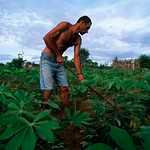

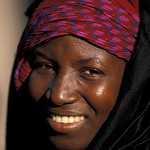
50 WORLD BANK BONDS FOR SUSTAINABLE DEVELOPMENT | IMPACT REPORT 2019
# Link to More Information Project Name (Number | Year/s Loans Approved) and Description Year/ FY Approved Country Project Life* (Years) 39 Commercial Agriculture Development Project (P159052 | FY18): increase productivity and market access for selected beneficiaries in the project areas. FY18 Angola 30 40 First Inclusive Growth Programmatic Development Policy Financing (P167889 | FY19): strenghten the foundations for private sector-led growth, and the social safety net and enhancing fiscal equity. FY19 Argentina 33 41 Paraiba Sustainable Rural Development Project (P147158 | FY18): improve access to water, reduce agro-climatic vulnerability and increase access to markets of Paraiba's rural inhabitants. FY18 Brazil 18 42 Jiangxi
Produce Distribution System Development
FY18):
the
farm products
participating
FY18 China 24 43 Support
FY18Congo, Republic of 22
Farm
Project (P147009 |
improve
distribution systems of selected
in
counties of Jiangxi.
to Enterprise Development and Competitiveness Project (P161590|FY18): foster MSME competitiveness in the targeted sectors and targeted geographic areas of the Republic of Congo's territory.
• 12% increase in average gross sales by crop/non-crop activities of beneficiary farmers and SMEs
• 11,500 farmers reached with agricultural assets or services
• 5,000 farmers adopting improved agricultural technology
• 2,500 ha provided with new/improved irrigation or drainage services
• 175 electricity connections supported by the project
• 8 anti-competitive practices resolved through sanctions or corrective measures by the new competition authority
• 10% increase in intermediate and capital goods imports, by value, subject to reduced tariffs or automatic licenses
• 45% increase in commercial companies registered as simplified corporations
• 59% increase in firms that issue securities that are using the streamlined multiple issuance preauthorization
• 80 integrity plans registered in the government procurement platforms for goods, services, and public works
• 5% increase in beneficiaries of social programs that receive social tariffs
• 6% decrease in sales tax (Ingresos Brutos) in total provincial own revenue
• 10 social programs included in the Single Window system
• 20 provinces actively implementing the new Universal Health Coverage system
• 41,400 people in urban areas provided with access to improved water sources
• 64,151 clients who have adopted an improved agricultural technology promoted by the project, 19,254 of which are women
• Increase by 20% in the average gross value of sales of producers under productive alliances
• 8,500 producers benefited with productive alliance subprojects
• 165,012 project beneficiaries
• 225,000 farmers reached with agricultural assets or services, 37,300 of which are female
• 186 farmer cooperatives supported
• 88,600 farmers receiving training
• 8 markets/distribution centers constructed or rehabilitated and connected to provincial market information platform
• 12 investment climate reforms implemented
• 20% of beneficiary firms under the Support to Enterprise Development grants demonstrating a sustained increase in annual turnover
• 50% of new firms supported under the Business Plan Competition that are still operating 24 months after receiving financial and non-financial assistance
• 100 business plans successfully launched
• 200 MSME receiving technical support and 500 benefiting from private sector initiatives
4 WORLD BANK BONDS FOR SUSTAINABLE DEVELOPMENT | IMPACT REPORT 2019 51 Target Resultsa, IBRD Original Commitment IBRD Net Commitmentb IBRD Disbursement FY19c IBRD Total Disbursement Total Project Financing IBRD%d
$130,000,000 $130,000,000 $2,274,264 $2,574,649 $230,000,000 57%
$500,000,000 $500,000,000 $498,750,000 $500,000,000 $500,000,000 100%
$50,000,000 $50,000,000 $1,301,202 $1,426,202 $80,000,000 63%
$150,000,000 $150,000,000 $3,000,000 $3,598,414 $198,280,000 76%
$25,000,000 $25,000,000 $2,685,326 $2,742,095 $25,000,000 100%
Industry, Trade & Services

Cashew Value Chain Competitiveness Project (P158810 | FY18): increase cashew productivity, quality and added value, benefiting smallholder farmers and the cashew processing industry in the Republic of Côte d’Ivoire.

45 Tamil Nadu Rural Transformation Project (P157702 | FY18): promote rural enterprises, access to finance, and employment opportunities in selected blocks of Tamil Nadu.

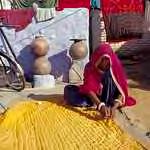
46 Assam Agribusiness and Rural Transformation Project (P155617 | FY18): add value and improve resilience of selected agriculture value chains, focusing on smallholder farmers and agro-entrepreneurs in targeted districts of Assam.
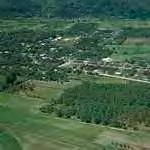
47 Integrated Infrastructure Development for National Tourism Strategic Areas Project (P157599 | FY18): improve the quality of, and access to, tourism-relevant basic infrastructure and services, strengthen local economy linkages to tourism, and attract private investment in selected tourism destinations in Indonesia.
48 Strengthening Entrepreneurship in Productive Forest Landscapes (P164661 | FY18): strengthen sustainable forest management and increase economic opportunities for forest-dependent people and enterprises in selected forest landscapes in Mexico.
52 WORLD BANK BONDS FOR SUSTAINABLE DEVELOPMENT | IMPACT REPORT 2019
# Link to More Information Project Name (Number | Year/s Loans Approved) and Description Year/ FY Approved Country Project Life* (Years) 44
FY18 Cote d'Ivoire 30
FY18 India 30
FY18 India 17
FY18 Indonesia 14
FY18 Mexico 15
Target Resultsa,
• Cashew productivity in the project area increased by 0.13 metric tons
• 110,374 metric tons of increased Raw Cashew Nut processed domestically each year
• 225,000 farmers reached with agricultural assets or services
• 190,000 metric tons of storage capacity of warehouses built and/or rehabilitated
• 12,000 jobs created within the cashew processing industrial platforms
• 411,620 project beneficiaries, 65% of which are female
• 60% of individual and collective enterprises with ongoing operations after two years of project support
• 75% of individual and collective enterprises supported by the project leveraging funds from financial institutions
• 40,000 beneficiaries accessing convergence training programs
• 7,670 individual and collective enterprises receiving funds from financial institutions
• 25% increase in price premium of commodities sold by beneficiaries in the selected value chains
• 500,000 farmers reached with agricultural assets or services
• 25% increase in selected commodities sold through new marketing channels
• 360,000 farmers adopting improved agricultural technology
• 25 climate resilient technologies demonstrated in the project areas
• US$388,800,000 of increased private investment in the tourism sector
• 2,849,500 beneficiaries of improvements to tourismrelevant basic infrastructure and services (546,000 people provided with access to improved water sources, 858,000 provided with access to sustainable solid waste collection service and 624,000 provided with access to improved sanitation services)
• 45,000 trainees and tourism professionals completing competency based certification
• 191,000 ha under sustainable landscape management practices
• 330,750 ha of forest area brought under management plans
• 70% increase in target beneficiaries that increase their Index of forest entrepreneurship by at least one range
• 370,015 beneficiaries implementing sustainable forest management schemes
• 3,688,424 tCO2 eq. reduced
IBRD Original Commitment IBRD Net Commitmentb IBRD Disbursement FY19c IBRD Total Disbursement Total Project Financing IBRD%d
$200,000,000 $200,000,000 $22,892,617 $23,366,447 $285,250,000 70%
$100,000,000 $100,000,000 $520,967 $770,967 $142,800,000 70%
$200,000,000 $200,000,000 $7,148,967 $8,554,585 $262,400,000 76%
$300,000,000 $300,000,000 $3,310,679 $3,310,679 $772,900,000 39%
$56,000,000 $56,000,000 $9,887,738 $10,027,738 $185,000,000 30% 4 WORLD BANK BONDS FOR SUSTAINABLE DEVELOPMENT | IMPACT REPORT 2019 53
Industry, Trade & Services
Agri-Food Value Chains (P158346 | FY18): increase the volume of added-value products commercialized in selected agri-food value chains in the Program area.
Punjab Agriculture and Rural Transformation P4R Program (P162446 | FY18): increase the productivity of crop and livestock farmers, improve their climate resilience, and foster agribusiness development in Punjab.
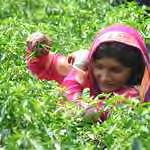
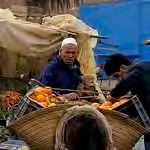
51 Youth Economic Inclusion Project (P158138 | FY18): improve economic opportunities for targeted disadvantaged youth in the selected governorates of the borrower.

52 Investment, Competitiveness and Inclusion Project (P161483 | FY18): help Tunisia boost job creation and inclusive growth.

54 WORLD BANK BONDS FOR SUSTAINABLE DEVELOPMENT | IMPACT REPORT 2019
# Link to More Information Project Name (Number | Year/s Loans Approved) and Description Year/ FY Approved Country Project Life* (Years) 49
FY18 Morocco 25 50
FY18 Pakistan 25
FY18 Tunisia 30
FY18 Tunisia 28
Strengthening
Target Resultsa,
• 193,200 tons of conditioned and exported citrus annually
• 24,871 tons of conditioned and exported olives annually
• 10,000 tons of high quality olive oil commercialized annually
• 1,000 small and/or medium enterprises agri-food authorized by ONSSA (National Food Safety Agency)
• 50 small- and/or medium-size producers and/or enterprises assisted by the Agri-food Innovation Center
• 175,000 farmers reached with agricultural assets or services
• 240 beneficiaries reached with financial services
• 5 private markets and collection centers established
• 165,000 farmers adopting climate-smart agriculture packages
• 500,000 farmers covered by agricultural insurance
• 400,000 ha under high-value agriculture
• 20% increase in share of supported youth with wage or self-employment
• 40% increase in share of supported youth with a job at intake who increased their monthly earnings by at least 20%
• 750 full-time equivalent (FTE) direct jobs created among businesses supported by the project
• 10,500 beneficiaries of job-focused interventions
• 7,000 youths who completed internships or training, 3,000 of which are female
• Reduction in number of days required to issue the “Foreign Trade Certificate” (from 7 to 3 days)
• Reduction in electricity and gas subsidies (from 1.20% to 1.00% of GDP)
• Reduction in transmission and distribution losses of the power utility (from 16% to 12.5% of generated power)
• Increase in volume of microcredits disbursed towards income generating activities from 1103 to 1775
• Cash transfer program for children’s human capital formation established
IBRD Original Commitment IBRD Net Commitmentb IBRD Disbursement FY19c IBRD Total Disbursement Total Project Financing IBRD%d
$200,000,000 $200,000,000 $42,960,000 $93,460,000 $200,000,000 100%
$300,000,000 $300,000,000 $19,650,000 $63,325,000 $300,000,000 100%
$60,000,000 $60,000,000 $10,055 $4,783,318 $60,000,000 100%
$500,000,000 $500,000,000 $483,314,156 $484,523,506 $500,000,000 100% 4 WORLD BANK BONDS FOR SUSTAINABLE DEVELOPMENT | IMPACT REPORT 2019 55
Information and Communication Technology
53 Improving Service Delivery to Citizens and Businesses through E-Government Project (P161989 | FY18): improve the quality of selected e-government services for citizens, businesses and the borrower's public entities, and facilitate their access.
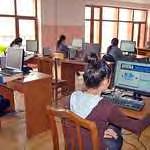
Public Administration
54 Private Sector Development for Inclusive Growth Development Policy Financing (P168630 | FY19): enable financial inclusion, private sector development and strengthening fiscal management for inclusive growth in Egypt.

55 Second Fiscal Consolidation and Inclusive Growth Development Policy Financing (P164201 | FY19): support Government’s efforts in strengthening fiscal sustainability and efficiency in public sector management; enhancing competitiveness; and protecting the poor.

# Link to More Information Project Name (Number | Year/s Loans Approved) and Description Year/ FY Approved Country Project Life* (Years)
FY19 Egypt, Arab Republic of 35
FY19 Gabon 20 56 WORLD BANK BONDS FOR SUSTAINABLE DEVELOPMENT | IMPACT REPORT 2019
# Link to More Information Project Name (Number | Year/s Loans Approved) and Description Year/ FY Approved Country Project Life* (Years)
FY18 Uruguay 18
• 35% reduction in processing time of foreign trade related administrative requirements by VUCE (Single Window for Foreign Trade) (equivalent to 17.4 hours)
• 300 additional distance learning materials delivered to targeted schools
• 15,000 citizens' administrative processes attended to by the Mobile Citizens Access Point
• 243 additional government executing units managing electronic invoices received from their providers
• 600,000 microfinance beneficiaries using mobile payment or e-payment
• 20,000 published collateral registrations used by MSME, corporate, individual debtors and syndicated loans
• 73% decrease in days needed to start a busines (from 11 to 3 days)
• 20 average firm registrations per month at the new Investor Service Centers
• 50% increase in non-government financing as percentage of total financing under Fekretak Sherketak/Egypt Ventures initiative
• 20% increase in the number of SMEs participating in public tenders and/or being awarded contracts
• 10% of property registration offices in the “new urban communities” implementing the more transparent procedures for deed registration
• 100,000 ride-sharing driver licenses issued
• 30,000 companies filing annual income tax returns electronically
• Reduction in energy subsidies as a percentage of GDP from 3.8% to 2.5%
• An updated expanded medium-term debt management strategy will be published
• All 27 governorates and 188 districts preparing their capital investment plans in accordance with the formula-based system
• Reduction in non-oil revenue (as a percentage of non-oil GDP)
• Reduction in number of days necessary for business registration
• Increased access to internet services
Target Resultsa, IBRD Original Commitment IBRD Net Commitmentb IBRD Disbursement FY19c IBRD Total Disbursement Total Project Financing IBRD%d
$1,000,000,000 $1,000,000,000 $997,500,000 $1,000,000,000 $1,000,000,000 100%
$200,000,000 $200,000,000 $198,410,451 $198,906,862 $200,000,000 100% 4 WORLD BANK BONDS FOR SUSTAINABLE DEVELOPMENT | IMPACT REPORT 2019 57 Target Resultsa, IBRD Original Commitment IBRD Net Commitmentb IBRD Disbursement FY19c IBRD Total Disbursement Total Project Financing IBRD%d
$12,000,000 $12,000,000 $1,829,995 $2,850,917 $12,000,000 100%
Public Administration



57 Strengthening Public Financial Management in Rajasthan (P156869 | FY18): contribute to improved budget execution, enhanced accountability, and greater efficiency in revenue administration in Government of Rajasthan.
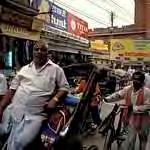
58 Chhattisgarh Public Financial Management and Accountability Program (P166578 | FY19): improve accountability in the management of public finances; strengthen revenue administration; and improve efficiency in delivery of benefits in selected schemes, in the state of Chhattisgarh.
59 Third Fiscal Reform Development Policy Financing (P167297 | FY19): support fiscal sector reforms that will assist the Government of Indonesia in achieving its medium-term economic development and poverty reduction goals.
60 Revenue Administration Reform Project (P149743 | FY18): improve the effectiveness of operational functions of Montenegro’s tax administration and to reduce the compliance costs for corporate taxpayers.

58 WORLD BANK BONDS FOR SUSTAINABLE DEVELOPMENT | IMPACT REPORT 2019
# Link to More Information Project Name (Number | Year/s Loans Approved) and Description Year/ FY Approved Country Project Life* (Years) 56 Uttar
FY18 India 19
FY18 India 14
Pradesh Pro-Poor Tourism Development Project (P146936 | FY18): increase tourism-related benefits for local communities in targeted destinations.
FY19 India 11
FY19Indonesia 14
FY18Montenegro 25
• 500 additional people provided with improved urban living conditions
• 300 individuals, professionals and small businesses in the project destinations with increased annual income
• Average duration of stay of tourists in project areas doubled
• 3,700,000 additional domestic visitors and 100,000 international visitors in project destinations
• Strengthened budget execution by increasing the use of Commitment Control System in 20 departments covering 90% of their capital expenditure above threshold as established by the policy
• Strengthened public procurement framework and capacity by developing database of debarred firms, enhancing procurement capacity of the officials and publishing/notifying Standard Bidding Documents
• Improving effectiveness of Tax Audit in the Commercial Taxes Department by improving by 20% audit hit
• District level planning under strengthened framework mainstreamed in Rural Development and Panchayati Raj Department and Department of Planning
• Complete and timely state financial reports available In public domain
• Audits completed in at least 10,500 units
• Increase in property tax collected over the baseline in the selected urban local bodies by 20%
• Use of direct benefit transfer in 90% of validated baseline of beneficiaries in the shortlisted schemes
• Decrease in time taken for central government monthly budget realization data to be made public from 2 months to 15 days
• Proportion of Ministry of Public Works and Housing budget (total) delivered through multi-year contracts increased by 10%
• 6% increase in ministries and agencies covered by disaster risk insurance (out of 87)
• 5% increase in the share of ministries and agencies undertaking budget tagging for climate change adaptation (out of 87)
• 20% increase in the proportion of the value of contractual package for the budget year being procured by the Ministry of Public Works and Housing in the first semester
• 90% increase in the share of monthly value-added tax (VAT) returns filed electronically
• Respectively 20% and 55% increase in the share of annual individual and corporate income tax income tax returns filed electronically
• Decrease in average time taken to receive land asset and access financial information requested for audit from 5 to 1 day
• The income tax regime is revised to reduce tax base erosion and broaden the tax base
• 6% reduction in tax gap for VAT compared to 2020
• 10% and 7% increase in tax returns filed on time (respectively for VAT and corporate income tax
• Decrease by 114 hours in the time it takes to pay taxes and social contributions
IBRD Original Commitment IBRD Net Commitmentb IBRD Disbursement FY19c IBRD Total Disbursement Total Project Financing IBRD%d
Target Resultsa,
$40,000,000 $40,000,000 $3,341,531 $4,585,584 $57,140,000 70%
$21,700,000 $21,700,000 $2,341,009 $2,395,259 $31,000,000 70%
$25,200,000 $25,200,000 $2,000,000 $2,063,000 $36,036,000 70%
$1,000,000,000 $1,000,000,000 $1,020,070,896 $1,020,070,896 $1,000,000,000 100%
$15,700,000 $15,700,000 $124,879 $778,509 $15,700,000 100% 4 WORLD BANK BONDS FOR SUSTAINABLE DEVELOPMENT | IMPACT REPORT 2019 59
Public Administration
Third Programmatic Shared Prosperity Development Policy Financing (P166159 | FY18): support the Government of Panama's efforts to strengthen the frameworks for international tax transparency, financial integrity, and fiscal management; strengthen institutional arrangements to support social assistance and education; and enhance the regulatory and financial sustainability framework of service delivery in the energy sector.
Improving Fiscal Management (P167651 | FY19): support the highlevel objective of the Government of the Philippines to improve fiscal management.
64 Framework Development and Infrastructure Financing to Support Public-Private Partnerships Project (P163864 | FY19): support the preparation of public-private partnerships that will enable the Government of Sri Lanka to facilitate private sector financing for the development of its priority infrastructure and services.
65 Sustainable Cities Project 2 (P161915 | FY18): improve the access to targeted municipal services in participating municipalities and utilities.


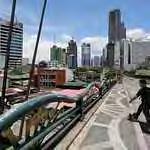


60 WORLD BANK BONDS FOR SUSTAINABLE DEVELOPMENT | IMPACT REPORT 2019
# Link to More Information Project Name (Number | Year/s Loans Approved) and Description Year/ FY Approved Country Project Life* (Years) 61 Casablanca
FY18):
to
services. FY18Morocco 23
FY18 Panama 20 63
FY19Philippines 19
Municipal Support Program (P149995 |
increase the investment capacity of the Municipality of Casablanca, improve the business environment and enhance access
basic
62
FY19Sri Lanka 20
FY18 Turkey 30
• 40% increase in municipal revenues excluding transfers
• 40% decrease in the average number of days required for issuance of a building permit at the municipality (equivalent to 20 days)
• 10,000 households in disadvantaged neighborhoods provided with improved access to basic services
• By 2019 Panama has started sending and receiving confidential financial information for tax purposes on automatic basis
• 55 banks supervised on-site on "Anti-Money Laundering"/"Combating the Financing of Terrorism" matters
• 90% of central government and decentralized agencies expenditure payments
• 100% of central government debt that is paid electronically
• 23% increase in extreme poor population benefiting from at least one social assistance program
• 70% of investments by local governments that follow National Planning and Public Investment System norms and procedures
• Revenue from the petroleum excise tax increased from 0.2% to 0.5% of GDP
• Revenue from VAT increased from 4.3% to 4.6% of GDP
• Increase by 10% in payments processed through the Budget and Treasury Management System
• At least 5 departments/agencies (DepEd; DOH; DPWH; NIA; and DSWD) will have data captured in the National Asset Registry by end-2019
• Feasibility studies or project designs completed for at least 5 public-private partnership (PPP) transactions with the assistance of the project
• Transaction advisory services provided for at least 4 PPP transactions with the assistance of the project
• Commercial closure of at least 3 PPP with the assistance of the project
• 268,000 urban people provided with access to improved sanitation services
• 225,000 m³ of additional water capacity provided
• 36 km of water pipes laid
• 333 km of sewerage pipes laid
• 1 deep sea discharge line constructed
• 414,000 project beneficiaries
4 WORLD BANK BONDS FOR SUSTAINABLE DEVELOPMENT | IMPACT REPORT 2019 61 Target Resultsa, IBRD Original Commitment IBRD Net Commitmentb IBRD Disbursement FY19c IBRD Total Disbursement Total Project Financing IBRD%d
$200,000,000 $200,000,000 $24,173,223 $95,540,854 $550,000,000 36%
$100,000,000 $100,000,000 $100,000,000 $100,000,000 $100,000,000 100%
$450,000,000 $450,000,000 $200,000,000 $200,000,000 $450,000,000 100%
$25,000,000 $25,000,000 $3,387,276 $3,449,776 $25,643,087 97%
$652,140,000 $652,140,000 $22,456,000 $22,671,015 $92,540,000 705%
66
Social Protection




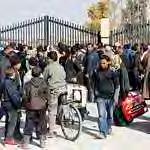

Salvador Social Multi-Sector Service Delivery Project (P162033 | FY18): improve social service delivery in the Municipality of Salvador, emphasizing improvements in health care system efficiency, education quality, and social assistance effectiveness.

67
First Inclusive and Sustainable Growth Development Policy Financing (P169822 | FY19): promote a more efficient mobilization and allocation of government resources; reduce barriers for private sector development; protect and include vulnerable segments of the population.
68
Social Fund for Development (P163108 | FY18): improve access to basic services and; to increase short-term employment opportunities, in targeted communities.
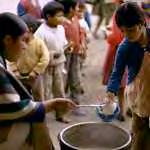
69 Emergency Social Stabilization and Resilience Project (P165114 | FY18): increase livelihood opportunities in liberated areas; increase access to psychosocial services in liberated areas; and strengthen the systems to expand the provision of social safety nets.
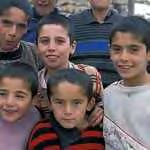
70
First Equitable Growth & Job Creation Programmatic Development Policy Financing (P166360 | FY18): support Jordan to set foundations to reduce business costs and improve market accessibility, create more flexible and integrated labor markets and provide better and more efficient social assistance, and improve fiscal sustainability and take more informed decisions regarding risk.
71
Social Services Improvement Project (P162246 | FY19): expand access to and improve the quality of social services, including preschool services, for vulnerable groups.
62 WORLD BANK BONDS FOR SUSTAINABLE DEVELOPMENT | IMPACT REPORT 2019
# Link to More Information Project Name (Number | Year/s Loans Approved) and Description Year/ FY Approved Country Project Life* (Years)
FY18 Brazil 31
FY19 Ecuador 30
FY18 Iraq 15
FY18 Iraq 15
FY18 Jordan 35
FY19North Macedonia 15
• 45% increase in students at adequate level of literacy and numeracy at the end of the second grade in municipal schools
• 28,500 families supported by the Integrated Family Support Program at the Social Assistance Reference Center
• 78 additional health units with health services provision available within the Municipal Regulation System
• 15,173 students benefiting from direct interventions to enhance learning
• 106 municipal primary care units with financial management system installed
• 6% decrease in the difference between approved and actual budget
• 1% decrease in spending in goods and services and personnel in the non-financial public sector as a share of GDP
• 1% decrease in energy subsidies as a share of oil revenues
• 1.4% increase in tax revenues as a share of GDP
• At least 3 new government contracts for amounts higher than US$50 million, including public-private partnership contracts in the tender process, that allow for international arbitration
• 2,590 new commercial companies registered and 12% decrease in average days to import
• 80% of households in the bottom 40 percent of the consumption distribution receiving compensation mechanisms for the subsidy reforms
• Regulatory framework of the reform, approved
• 24 million of debit card transactions associated to consumption
• 1,500,000 households benefitting from improved access to basic services, 750,000 of which are women
• 150,000 beneficiaries of short term employment, 50,000 of which are women
• 1,350 targeted government staff trained in participatory decision-making
• 150,000 beneficiary households receiving Cash for Work support, 75,000 of which are female headed households
• 150,000 beneficiaries receiving direct counseling
• 12,000 beneficiaries receiving livelihood support
• 1,200,000 beneficiaries of social safety net programs
• Aggregate business compliance costs reduced by 30%
• Guaranteed exports as a percentage of total exports doubled
• 10% increase in average annual growth of formal, private, part-time work for youths
• 1,919 additional manufacturing and services work permits issued to Syrian workers
• 85,000 households covered by National Aid Fund
• Increase by 10.8% in national preschool enrollment rates for children ages 3 to 6 years old
• 60% increase in cash benefit recipients and social services recipients recertified and recorded in the new information system
• 40% of preschools with improved process quality as measured by the quality assessment tool
• 3,000 beneficiaries receiving non-institutional social services (alternative/non-residential forms of care) from licensed providers
• 10,000 beneficiaries of social safety net programs
4 WORLD BANK BONDS FOR SUSTAINABLE DEVELOPMENT | IMPACT REPORT 2019 63 Target Resultsa, IBRD Original Commitment IBRD Net Commitmentb IBRD Disbursement FY19c IBRD Total Disbursement Total Project Financing IBRD%d
$125,000,000 $125,000,000 $55,200,000 $55,512,500 $250,000,000 50%
$500,000,000 $500,000,000 $500,000,000 $500,000,000 $500,000,000 100%
$300,000,000 $300,000,000 $5,000,000 $5,750,000 $300,000,000 100%
$200,000,000 $200,000,000 $10,000,000 $10,500,000 $200,000,000 100%
$389,000,000 $389,000,000 $388,027,500 $389,000,000 $500,000,000 78%
$33,400,000 $33,400,000 $1,125,790 $1,207,639 $33,400,000 100%
72 Regional and Local Roads Connectivity (P163239 | FY18): improve access to selected agricultural and tourism centers, and to strengthen their municipalities’ capacity to manage their road assets.
73 Northwestern Road Development Corridor Project (P163115 | FY18): improve connectivity and road safety along targeted road sections of the Northwestern Corridor and to support corridor development in the Northwest of Argentina.

74 Republika Srpska Railways Restructuring Project (P161122 | FY18): improve transport connectivity of the country along priority transport links and to support improvements in transport operations and asset management practices.

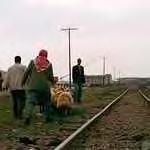
75 Hubei Inland Waterway Improvement Project (P158717 | FY18): improve inland waterway transport capacity and reliability along the Han River in support of low carbon development.

76 Madhya Pradesh Rural Connectivity Project (P157054 | FY18): improve durability and enhance resilience to climate changes of the gravel surfaced rural roads in Madhya Pradesh while building the capacity of the state to manage its rural road network and road safety.

77 Enhancing Infrastructure Efficiency and Sustainability (P163760 | FY18): improve the management and sustainability of select public infrastructure by strengthening government capacity and systems, upgrading assets, and increasing expenditure efficiency.

64 WORLD BANK BONDS FOR SUSTAINABLE DEVELOPMENT | IMPACT REPORT 2019
# Link to More Information Project Name (Number | Year/s Loans Approved) and Description Year/ FY Approved Country Project Life* (Years)
Transportation
FY18 Albania 30
FY18 Argentina 32
FY18 Bosnia and Herzegovina 32
FY18 China 25
FY18 India 25
FY18 Serbia 20
• Travel time on project roads reduced by 35%
• Improved municipalities’ road asset management capacity as demonstrated through the adoption of Municipal Rehabilitation and Maintenance Plan
• 9 agricultural and tourism centers connected by improved project roads
• 55 km of rural roads rehabilitated
• 20% average travel time saved (25% for cars and 17% for trucks)
• Flow of passenger vehicles increased by 1,266 vehicles per day (additional 1,224 cars and 42 buses per day)
• Freight volume transported along targeted road sections of the Northwestern Development Corridor increased by 1.24 millions tons per year
• 30% decrease in traffic-related deaths per hundred million vehicle-kilometers travelled along targeted road sections of the Northwestern Development Corridor
• 41% decrease in Railway Company of Republika Srpska working ratio
• Public Service Obligations Contract for passenger services implemented and fully covering passenger operations deficit
• Multi-annual infrastructure contract implemented, fully covering infrastructure investments
• 3,390,000 tons of traffic passing through the Yakou Complex annually
• 340 days of navigability of 1000 DWT (Dead Weight Tonnage) vessels annually
• 13,689 tons of CO2 emission reduction annually
• 6 additional powerhouses in operation
• 246,000,000 KWh of renewable energy provided
• 340 staff trained
• 25% decrease in annual maintenance cost (equivalent to US$250 per km)
• Maintenance network investment plan prioritized
• 100% of state highway network covered under Road Accident Data Management System
• 10,510 km of rural roads constructed
• 1,500,000 rural population connected by all weather paved roads
• 7,000 km of roads with better pavement condition by IRI (International Roughness Index) < 2.5
• 1,100,000 MWh of projected lifetime energy savings (in renovated public buildings)
• 195 renovated buildings that meet Class C (or 2 classes higher) energy performance certificate
• 19,000 metric tons of CO2 emissions reduction from energy saved in renovated buildings
• 8,000 km of national roads maintained
• 1,381,000 estimated direct project beneficiaries
4 WORLD BANK BONDS FOR SUSTAINABLE DEVELOPMENT | IMPACT REPORT 2019 65 Target
IBRD Original Commitment IBRD Net Commitmentb IBRD Disbursement FY19c IBRD Total Disbursement Total Project Financing IBRD%d
Resultsa,
$50,000,000 $50,000,000 $1,136,250 $1,261,250 $50,000,000 100%
$300,000,000 $300,000,000 $27,000,000 $27,750,000 $311,000,000 96%
$60,598,000 $60,598,000 $40,241,225 $40,390,841 $149,191,750 41%
$150,000,000 $150,000,000 $26,348,054 $26,723,054 $515,130,000 29%
$210,000,000 $210,000,000 $74,820,097 $75,345,097 $502,000,000 42%
$118,600,000 $118,600,000 $3,379,200 $33,476,888 $763,960,000 16%
Water, Sanitation & Waste Management
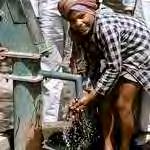
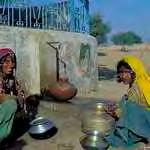
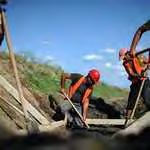
Water Supply and Sewerage Service Delivery Reform Programmatic Development Policy Financing (P167246 | FY19): support the Government of Himachal Pradesh in its policy and institutional development program for improving water supply and sewerage services that are financially sustainable and managed by an accountable institution responsive to its customers.
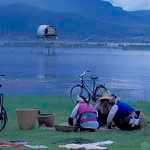
66 WORLD BANK BONDS FOR SUSTAINABLE DEVELOPMENT | IMPACT REPORT 2019
# Link to More Information Project Name (Number | Year/s Loans Approved) and Description Year/ FY Approved Country Project Life* (Years) 78 Hezhou Urban Water Infrastructure and Environment Improvement Project (P158622 | FY18): improve flood risk management and reduce discharge of water pollutants in Hezhou Municipality. FY18 China 32 79 Jiangxi Integrated Rural and Urban Water Supply and Wastewater Management Project (P158760 | FY19): increase access to and improve operating efficiency of water supply services, and to pilot provision of improved wastewater management, in selected counties in Jiangxi Province. FY19 China 29 80 Uttarakhand Water Supply Program for Peri Urban
(P158146 | FY18): increase
to improved water supply services in peri-urban areas in Uttarakhand. FY18 India 17 81
FY19 India 16
Areas
access
Shimla
• 105,600 people protected by improved flood mitigation infrastructure
• 100,000 people provided with access to improved sewerage systems
• Flood risk management system developed and implemented
• 1,073 metric tons of Biological Oxygen Demand (BOD) pollution loads removed by the completion of sewer system annually
• 68 km of river rehabilitated to improve flood risk management and prevent water pollution
• 16 km of sewer pipeline constructed
• 4 water quality monitoring stations constructed and operational
• 584,198 people with new access to piped water supply
• Non-revenue water decrease by 10%
• Operation and Maintenance unit cost of water supply system decreased by 22% (equivalent to 0.141 RMB/m³)
• 28,000 people with new connections to sewerage systems
• 16 km of sewerage pipelines completed or rehabilitated
• 83% decrease in BOD in pilot wastewater treatment plant (equivalent to 73 tons)
• 1,880 km of water supply pipelines newly constructed and rehabilitated
• 436,800 people receiving improved water supply services in peri-urban areas, 218,400 of which are female
• 30 peri-urban areas with improved policy, planning and M&E systems implemented
• 87,757 water connections providing improved water supply services in peri-urban areas
• Annual report on water services performance in peri-urban areas prepared and published
• 0.5 hours per day per (female) household saved due to water connection
• 2 urban local bodies as customers of the Shimla Jal Prabandhan Nigam Limited
• Collection efficiency increased by 20%
• Increase in Operations and Maintenance cost recovery for bulk water & distribution, water distribution and sewage by, respectively, 20%, 50% and 70%
• 2-% decrease in energy consumption of water production from existing sources
• 20% reduction in non-revenue water
4 WORLD BANK BONDS FOR SUSTAINABLE DEVELOPMENT | IMPACT REPORT 2019 67 Target
IBRD Original Commitment IBRD Net Commitmentb IBRD Disbursement FY19c IBRD Total Disbursement Total Project Financing IBRD%d
Resultsa,
$150,000,000 $150,000,000 $8,000,000 $8,448,371 $359,400,000 42%
$200,000,000 $200,000,000 $2,000,000 $2,500,000 $366,730,000 55%
$120,000,000 $120,000,000 $1,000,000 $1,300,000 $150,000,000 80%
$40,000,000 $40,000,000 $39,900,000 $40,000,000 $40,000,000 100%
Water, Sanitation & Waste Management


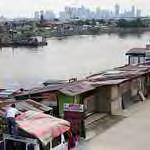


Notes:
Amounts may not add up due to rounding.
Indicates project included in World Bank Green Bond portfolio. Indicates projects specifically designed to address the challenges of fragility, conflict, and violence.

*Project Life generally indicates the period of time between the project approval date and the last repayment date of the project.
/a Target results are expected results based on estimates developed at the time of project approval and expected to materialize at the end of the project implementation period (5 years in most cases). The indicators shown are normally a subset of the development impacts contained in project documentation available in the World Bank project website (http:// www.worldbank.org/projects). Results reported are based on the entire project, with the percent shown next to the loan amount corresponding to the proportion of the total financing that is financed by World Bank loans. Actual impacts may be different from these estimates and do not represent the actual results in a specific year. Quantitative estimates are intended to be indicative of the scale of impacts and qualitative results aim to inform about the nature of changes that will be achieved as a result of projects once they are completed and at full capacity.
/b The committed amount is the World Bank loan net of cancellations reported in equivalent US$ billions. Loans denominated in other currencies are converted to US$ equivalents using the spot exchange rate on the report date (June 30, 2019).
/c The disbursement amount is the amount of World Bank bond proceeds allocated to support the financing of disbursements to the project reported in equivalent US$ millions. Loans denominated in other currencies are converted to US$ equivalents using the spot exchange rate on the report date (June 30, 2019).
/d The percentage shows the share of the total financing that is provided by World Bank loans. When a project is co-financed, this share could be used to apportion total results to the World Bank.
68 WORLD BANK BONDS FOR SUSTAINABLE DEVELOPMENT | IMPACT REPORT 2019
# Link to More Information Project Name (Number | Year/s Loans Approved) and Description Year/ FY Approved Country Project Life* (Years) 82
Urban Water Supply Project (P156125 | FY19): provide access to improved water sources for the population and strengthen the operational performance of water service providers in selected urban areas. FY19 Indonesia 14 83 Baghdad Water Supply and Sewerage Improvement Project (P162094 | FY18): improve the quality of drinking water supply and wastewater services in Baghdad. FY18 Iraq 15 84 Metro Manila Flood Management Project (P153814 | FY18): improve flood management in selected areas of Metro Manila. FY18 Philippines 25
National
• 6,000,000 people provided with access to improved water sources, 3,000,000 of which are women
• 1,200,000 new piped household water connections
• 200 local governments and local government-owned utilities (Perusahaan Daerah Air Minum) participate in technical assistance and capacity building programs
• The National Urban Water Supply Framework operationalized
• 1,000,000 people provided with access to improved water sources
• 1,000 people benefiting from access to improved drinking water supply
• 4,000 people benefiting from access to improved sanitation
• Increased by three times the duration of water supply at a minimum pressure (10m) in Shaab and Rasheed municipalities (equivalent to 16 additional hours)
• 135,000 m³ of additional reservoir capacity constructed
• 97 m³ of additional wastewater collected and safely disposed annually
• 4,900 ha of flood-prone areas that are free of water within 24 hours after a major rainfall event
• 1,700,000 direct project beneficiaries, 850,000 of which are female
• 8,500 m³ of decreased solid wastes collected at targeted existing pumping stations
• 36 existing pumping stations rehabilitated and 20 new pumping stations constructed and operational
• 104 km of drainage waterways cleaned
4 WORLD BANK BONDS FOR SUSTAINABLE DEVELOPMENT | IMPACT REPORT 2019 69 Target Resultsa, IBRD Original Commitment IBRD Net Commitmentb IBRD Disbursement FY19c IBRD Total Disbursement Total Project Financing IBRD%d
$100,000,000 $100,000,000 $1,000,000 $1,000,000 $602,600,000 17%
$210,000,000 $210,000,000 $5,000,000 $5,525,000 $210,000,000 100%
$207,603,205 $207,603,205 $4,478,489 $4,997,497 $500,000,000 42%
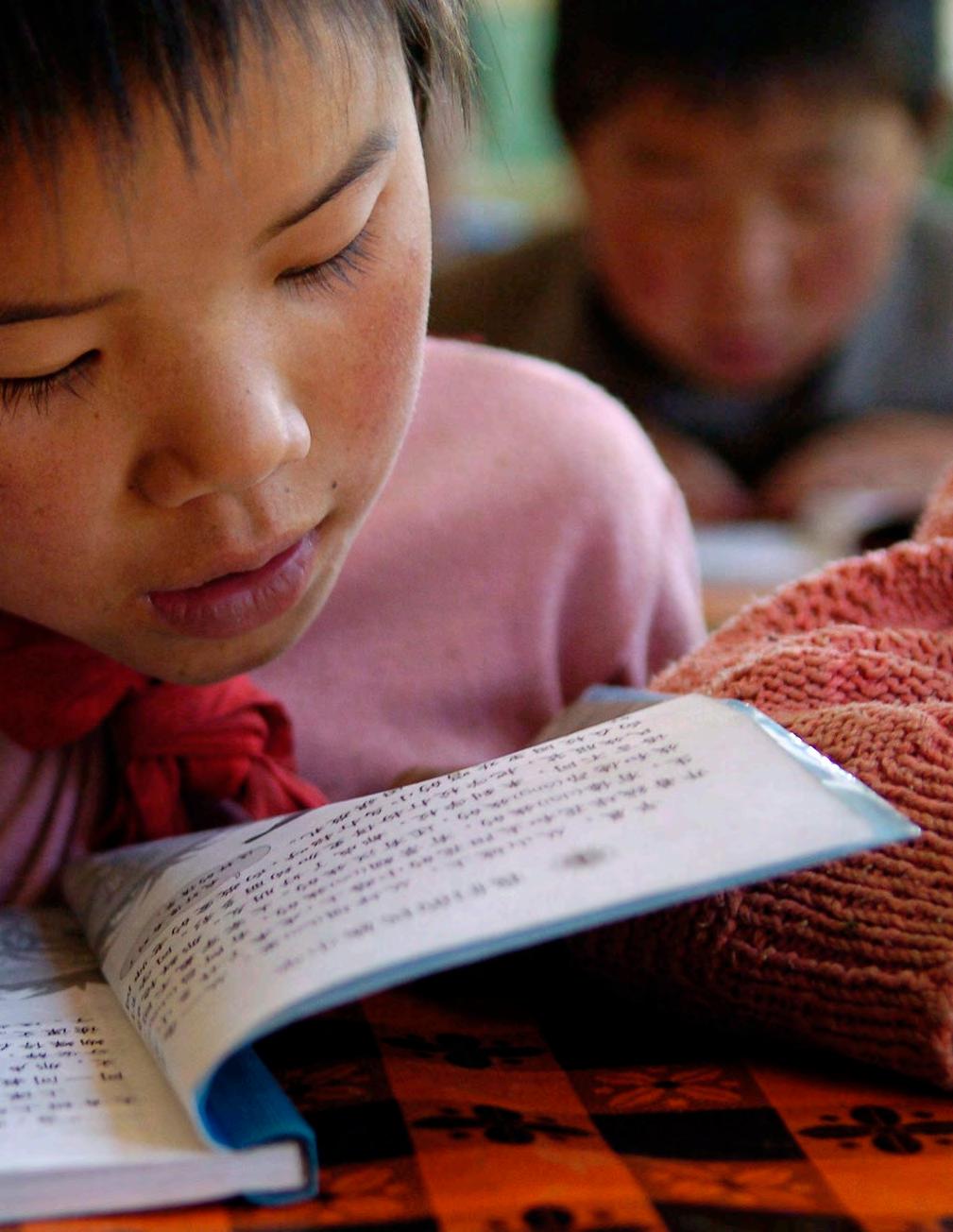
Annex
Impact Reporting Approach
The intention of impact reporting is to help investors develop a more detailed understanding of the results from World Bank projects. Several key results indicators have been selected and, where possible, quantified, but it is important to appreciate the inherent limitations of data reported. The main considerations to adequately interpret results are:
RESULTS INDICATORS
The indicators used in the projects tables of this report have been selected from among other expected development results and are intended to illustrate the type and scale of expected resultsinavarietyofsectorsandcountrycontexts.
SCOPE OF RESULTS
Unless otherwise indicated, reporting is based on ex ante estimates of impacts at the time of project appraisal and mostly for direct project effects.The Project Impact Highlights of this report includes selected results that are aggregated where possible and do not represent all countries or regions where the World Bank supports the financing of projects. Project Impact Highlights should not be considered a comprehensive accounting of results. Additional project results are presented in the Projects bySectorsectionofthereportandthefullsetofproject resultscanbefoundat http://projects.worldbank.org
UNCERTAINTY
An important consideration in estimatingimpactindicatorsandprojectingresultsisthat theyarebasedonassumptions.Whiletechnicalexperts aim to make sound and conservative assumptions that are reasonable based on the information available at the time, the actual impact of the projects generally diverge from initial projections. In general, behavioral changes or shifts in baseline conditions can cause deviationsfromprojections.
COMPARABILITY Caution should be taken in comparingprojects,sectors,orwholeportfoliosbecause baselines (and base years) and calculation methods may vary significantly. In addition, the cost structures between countries will also vary, so that developing cost-efficiencycalculations (such as results per dollar invested) could, for example, place smaller countries with limited economies of scale at a disadvantage and willnottakeintoconsiderationcountry-specificcontext.
OMISSIONS AND QUALITATIVE RESULTS
Because the selected projects aim to provide social and developmental benefitsas well as climate and environmental ones, they will have impacts across a much wider range of indicators than captured in the previous section. Therefore, exclusively focusing on the reported indicators will leave out other important development impacts. Where quantitative data is unavailable, qualitative indicators have been included to illustrate other beneficialimpacts.
PERIOD
OF INCLUSION
IN REPORT Projects are added to the impact report in the fiscal year that the project is approved after loan disbursements have begun.
REPORTING FOR CO-FINANCED PROJECTS
The World Bank often co-finances projects with the client country and/or other lenders. The results for the individual project are based on the total project including all financiers. The World Bank’s share of the totalfinancingisincludedforeachproject.
AGGREGATIONS OF GHG ESTIMATES When reported in the “Project Appraisal”, “Implementation Status and Results”, and/or “Implementation Completion and Results” reports, the GHG emission reductions for projects are reported in tons of CO2 equivalent. The World Bank, in conjunction with other International Finance Institutions, developed a harmonized approach for GHG accounting. At the same time, the World Bank developed internally consistent GHG accounting methodologies in order to track ex-ante gross and net emissions in investment projects across relevant sectors and over their economic lifetime. Starting in FY19, the WBG is reporting aggregated annual net GHG emissions reductions in the 2019 Corporate Scorecard.8 Given these recent developments in GHG accounting, the basis for estimating CO2 equivalent emission reductions for projects approved prior to FY19 may vary.
ALL REPORTED RESULTS ARE FROM PUBLICLY AVAILABLE SOURCES Reporting is based on publicly available impacts for the projects disclosed in “Project Appraisal”, “Implementation Status and Results”,and “Implementation Completion and Results” reports. To facilitate comparability of the reported results, the reporting units have been converted where such conversion is based on a standard conversion factor. For a broader country context on developmental impacts of projects, view the full set of project documentation available on the World Bank websiteat http://projects.worldbank.org
Notes:
/ For more information on the harmonization framework, see http://documents. worldbank.org/curated/en/758831468197412195/pdf/101532-WP-P143154-PUBLICBox394816B-Joint-IFI-RE-GHG-Accounting-Approach-clean-final-11-30.pdf /8 https://scorecard.worldbank.org/tier1-development-context
54 WORLD BANK BONDS FOR SUSTAINABLE DEVELOPMENT | IMPACT REPORT 2019
ANNEX 2:
ANNEX 1: 4 WORLD BANK BONDS FOR SUSTAINABLE DEVELOPMENT | IMPACT REPORT 2019 71
ANNEX 3: 1
2 3 4 5 6
2:
World Bank Project Cycle
All projects that the World Bank chooses to finance and to which it applies bond proceeds go through the Project Cycle.
PROJECT IDENTIFICATION
The World Bank works with a borrowing country’s government on a Country Partnership Framework that identifies the country’s priorities for reducing poverty and improving living standards. Within those priorities, the World Bank and the government agree on a project concept, which is outlined in a Project Concept Note. The Project Information Document outlines the project’s scope, and the Integrated Safeguards Data Sheet identifies potential environmental and social issues.
PROJECT PREPARATION
The borrower leads project preparation, with the World Bank generally taking an advisory role. If necessary, the borrower prepares an Environmental Assessment Report that describes the project’s likely environmental impact and steps to mitigate possible harm. If there are major issues, the borrower prepares an Environmental Action Plan. An analysis of a project’s potentially adverse effects on indigenous peoples may also be undertaken, and any issues are addressed in the Indigenous Peoples Plan.
PROJECT APPRAISAL
The government and the World Bank review the identification and preparation documents and confirm the expected project outcomes, intended beneficiaries and evaluation tools, as well as the project’s readiness for implementation. The Project Information Document is updated and released when the project is approved for funding.
PROJECT APPROVAL
The project team prepares the Project Appraisal Document (for Investment Project Financing) or the Program Document (for development policy financing), along with other financial and legal documents, for submission to the World Bank’s Board of Executive Directors for approval. When approval is obtained and the legal documents are signed, the implementation phase begins.
PROJECT IMPLEMENTATION
The borrower implements the project with technical assistance and support from the World Bank as needed. Twice a year, the government and the World Bank prepare a review of project progress, the Implementation Status and Results Report.
PROJECT COMPLETION & EVALUATION
4 WORLD BANK BONDS FOR SUSTAINABLE DEVELOPMENT | IMPACT REPORT 2019 55
01 02 03 04 05 06 Identification Preparation Approval Appraisal Implementation Completion& Evaluation ANNEX
When a project is completed and closed, a World Bank operations team prepares an Implementation Completion and Results Report. The final outcomes are compared to expected results. The team also assesses how well the project complied with the World Bank’s operations policies, and accounts for the use of World Bank resources. The World Bank’s Independent Evaluation Group (IEG) assesses the performance of roughly one project out of four projects a year, measuring outcomes against the original objectives, sustainability of results and institutional development impact. IEG may produce Impact Evaluation Reports to assess the economic worth of projects and the long-term effects on people and the environment. 72 WORLD BANK BONDS FOR SUSTAINABLE DEVELOPMENT | IMPACT REPORT 2019
1 2 3 4 5 6
Accountability Mechanisms
Four key groups hold the Bank accountable to its clients and shareholders, ensure the highest performance standards in development effectiveness, protect the integrity of the projects financed, and constantly improve the efficacy of its internal operations:
1 2 3 4
The INSPECTION PANEL, established by the Bank’s Board of Directors as the first independent accountability mechanism at an international financial institution, provides people and communities who believe that they have been or are likely to be harmed by a project funded by IBRD or IDA access to an independent body, where they can express their concerns and seek recourse. The Inspection Panel’s annual reports are available online at inspectionpanel.org.
The INDEPENDENT EVALUATION GROUP (IEG) aims to strengthen the Bank Group’s development effectiveness through evaluations that assess results and performance and provide recommendations for improvements. IEG’s evaluations contribute to accountability and learning, helping inform the Bank Group’s directions, policies and procedures, and country partnership frameworks. IEG reports are available online at ieg.worldbankgroup.org.
The INTEGRITY VICE PRESIDENCY (INT) investigates allegations of fraud, corruption, collusion, coercion, and obstruction in Bank Group-financed projects, including those involving Bank Group staff and corporate vendors. INT’s annual report is available online at worldbank.org/en/about/unit/integrity-vice-presidency.
The GROUP INTERNAL AUDIT (GIA) provides independent, objective, and insightful riskbased assurance and advice to protect and enhance the value of the World Bank Group. GIA provides senior management and the Board with an independent view and reasonable assurance that processes for managing and controlling risks—as well as their overall governance—are adequately designed and functioning effectively. GIA’s annual and quarterly reportsareavailableonline at worldbank.org/internalaudit.
ANNEX
3:
The World Bank monitors IBRD’s operational performance through the World Bank Corporate Scorecard and provides regular opportunities to discuss progress on operations with the Bank’s Executive Directors. The World Bank Corporate Scorecard is available online at scorecard. worldbank.org. Boards of Directors’ Work Programs, Calendars, and Meeting minutes are available at worldbank.org/en/about/leadership/directors 4 WORLD BANK BONDS FOR SUSTAINABLE DEVELOPMENT | IMPACT REPORT 2019 73
World Bank Sustainability Reporting Resources
The Sustainability Review 2019 provides insights into World Bank activities undertaken between July 1, 2017, and June 30, 2019, to manage the environmental, social, and economic impacts of internal business operations. The content and data in this document relate to IBRD and IDA, together, the World Bank. This Review complements the World Bank GRI Index 2019.

The GRI Index 2019 provides an overview of sustainability considerations within the World Bank’s lending and analytical services as well as its corporate activities. This index of sustainability indicators has been prepared in accordance with the internationally recognized standard for sustainability reporting, the GRI Standards: Core option (https://www. globalreporting.org). The GRI Index covers activities from fiscal year 2019, July 1, 2018, through June 30, 2019.
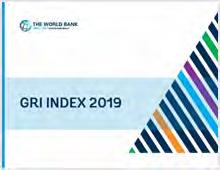
The World Bank Corporate Responsibility Strategic Plan, approved in 2016, reviews mandates and progress on corporate responsibility at the World Bank; evaluates the current corporate responsibility landscape and trends; engages stakeholders for input on corporate responsibility issues; identifies implementation priorities; and establishes a rolling three-year implementation plan for corporate responsibility.
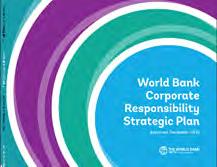
Find out more on the World Bank’s progress on sustainability in our reporting to the CDP, formerly known as the Carbon Disclosure Project.
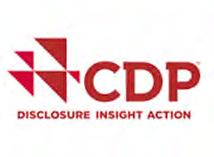
The Corporate Scorecards provide an overarching view of the results and performance indicators of the World Bank Group’s three institutions: the World Bank (IBRD and IDA), the International Finance Corporation (IFC), and the Multilateral Investment Guarantee Agency (MIGA). The Scorecards are critical tools for monitoring the WBG’s performance in key global and institutional priority areas.
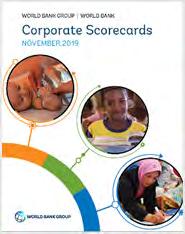
The Annual Report provides insights and financial data on the World Bank’s activities and contributions to development progress for the fiscal year. Information and results are presented thematically and by region. Fiscal year data is presented separately for IBRD and IDA.
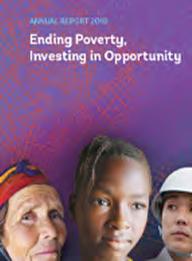
ANNEX 4:
74 WORLD BANK BONDS FOR SUSTAINABLE DEVELOPMENT | IMPACT REPORT 2019
INVESTOR RELATIONS Capital Markets Department The World Bank Treasury 1818 H St NW Washington, DC 20433 USA debtsecurities@worldbank.org +1 (202) 477-2880 treasury.worldbank.org/capitalmarkets E T W

 Photo credit: © Stephan Gladieu / World Bank
Photo credit: © Stephan Gladieu / World Bank



 Photo credit: © Heather Elliott / World Bank
Photo credit: © Heather Elliott / World Bank
 Photo credit: © Henitsoa Rafalia / World Bank
Photo credit: © Henitsoa Rafalia / World Bank



















 Photo credit: © Curt Carnemark / World Bank
Photo credit: © Curt Carnemark / World Bank

























 Photo credit: © Danilo Pinzon / World Bank
Photo credit: © Danilo Pinzon / World Bank


























































































